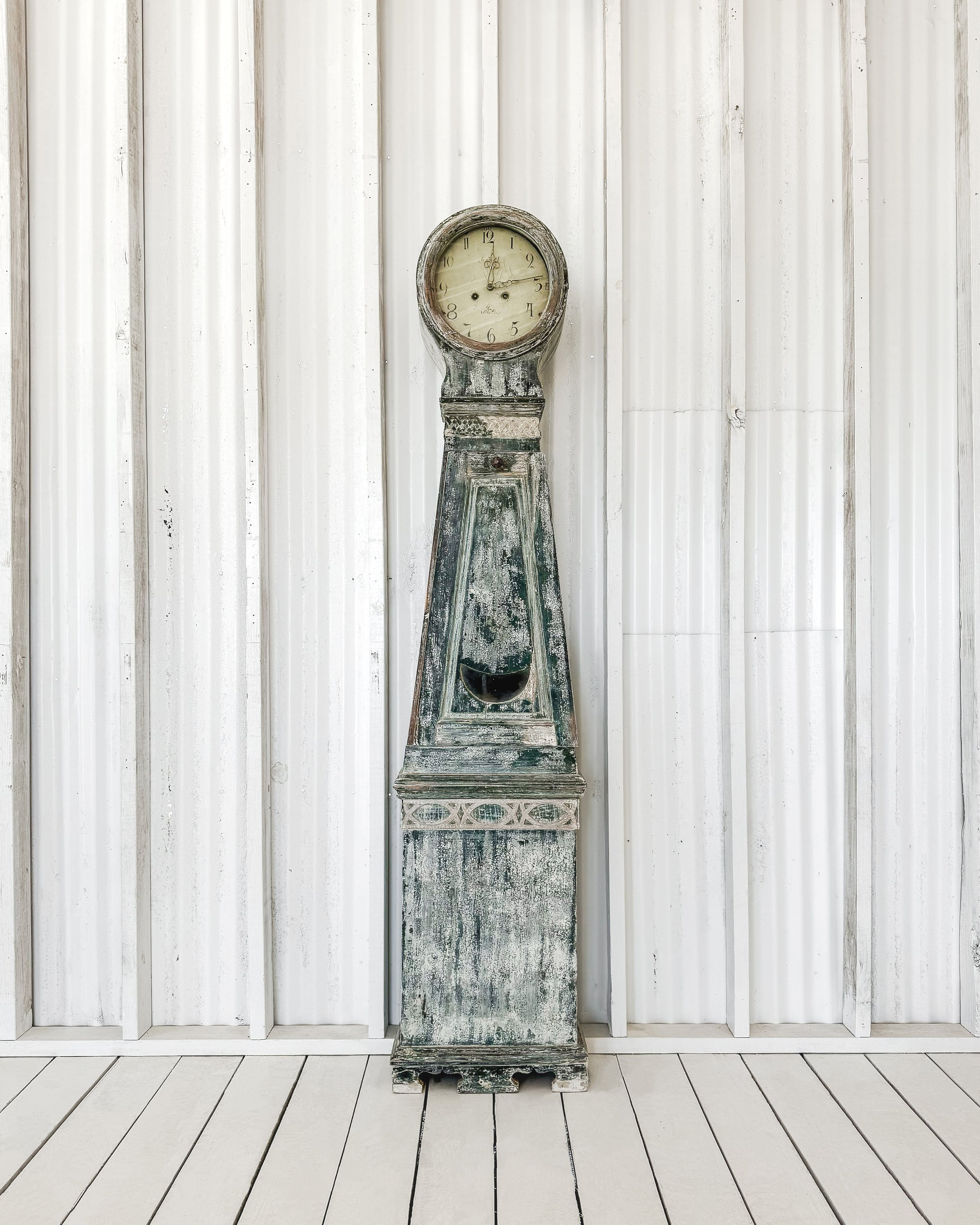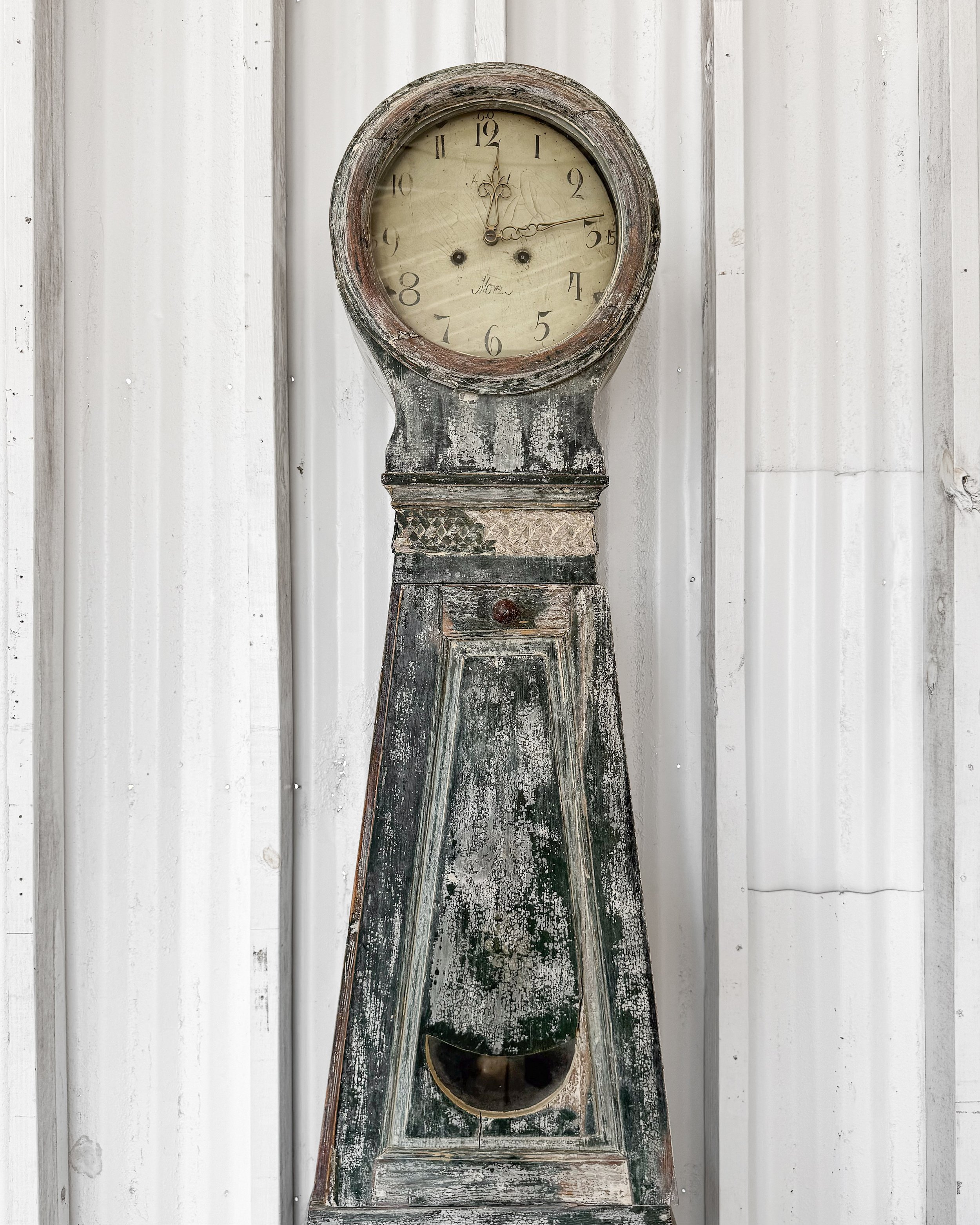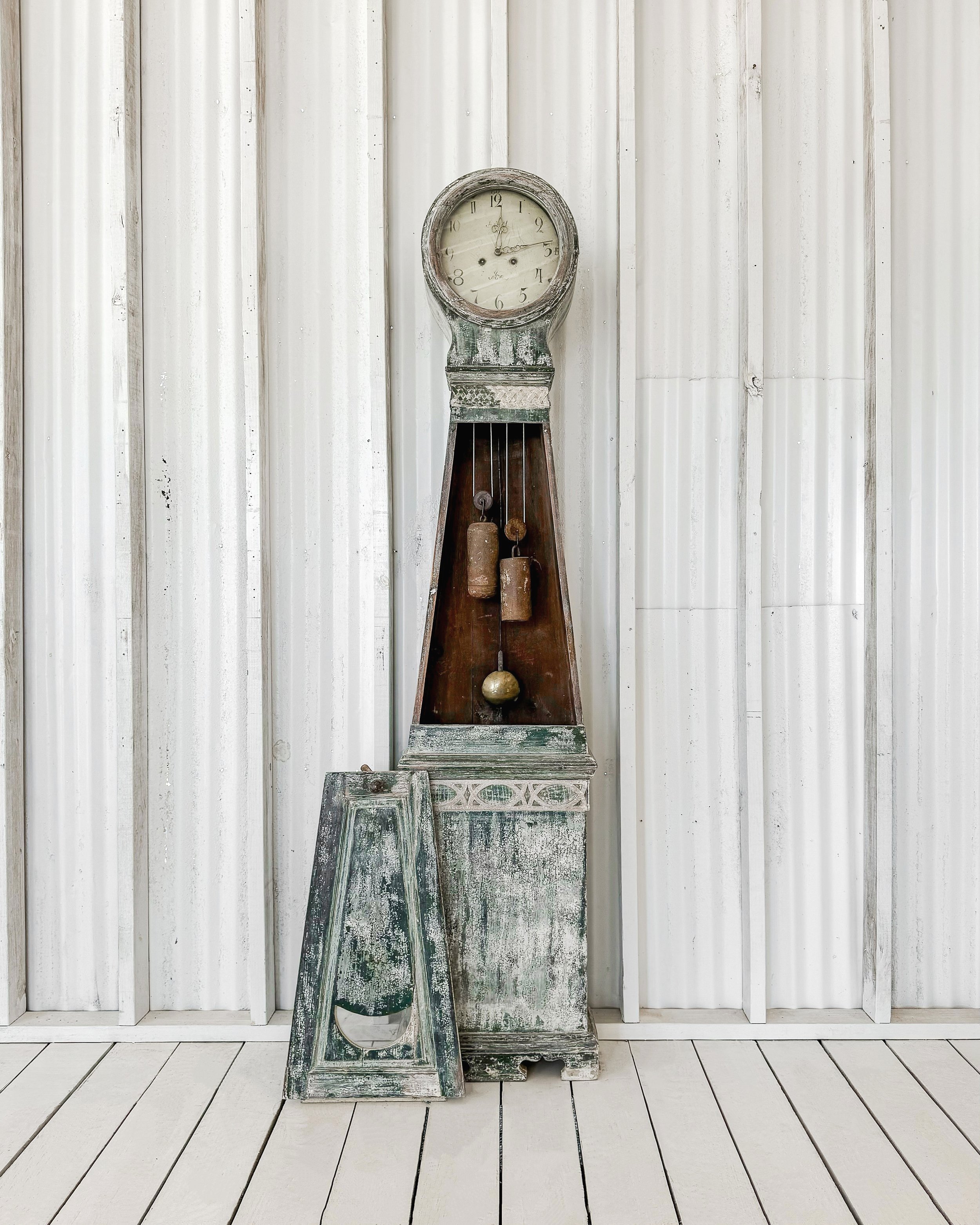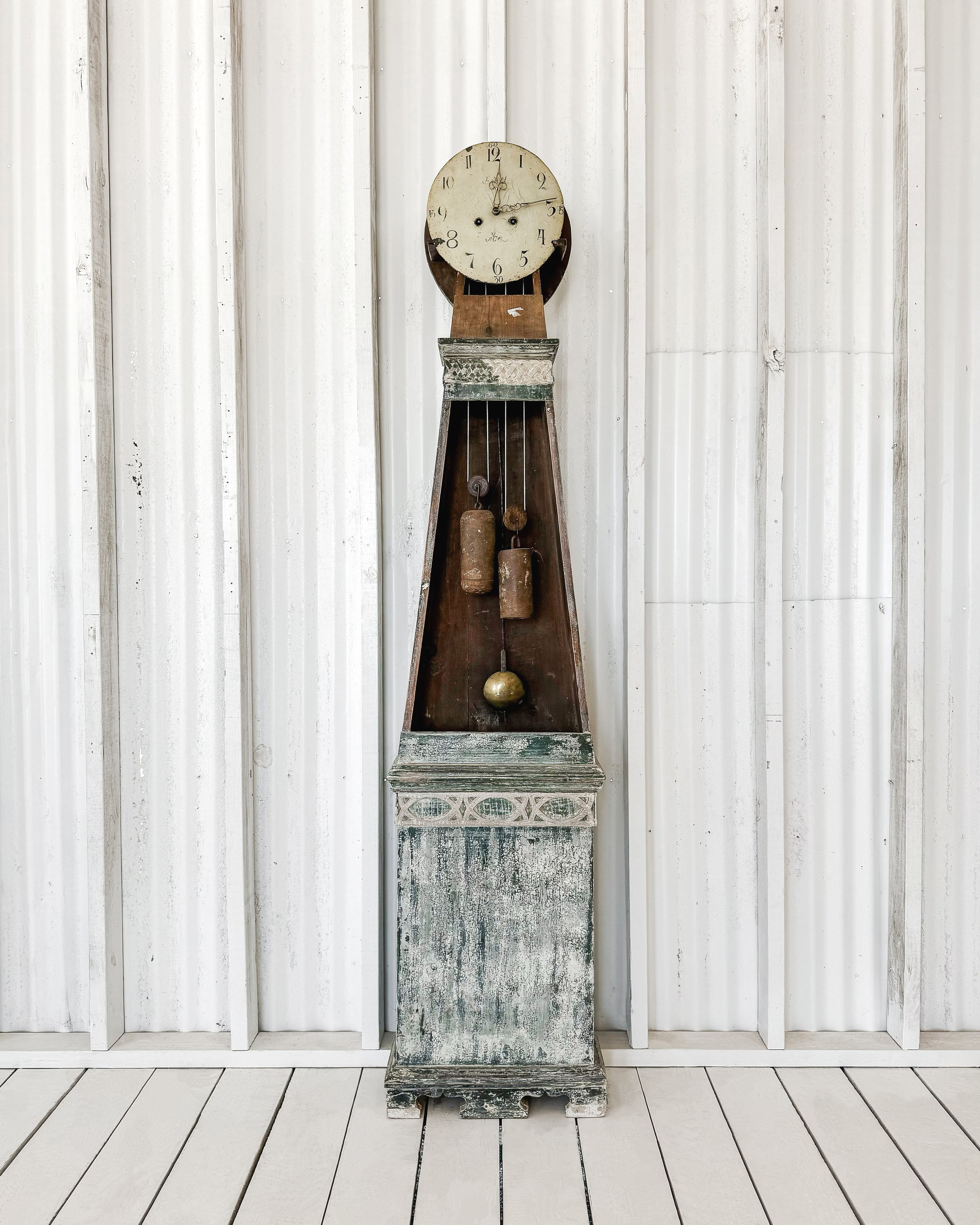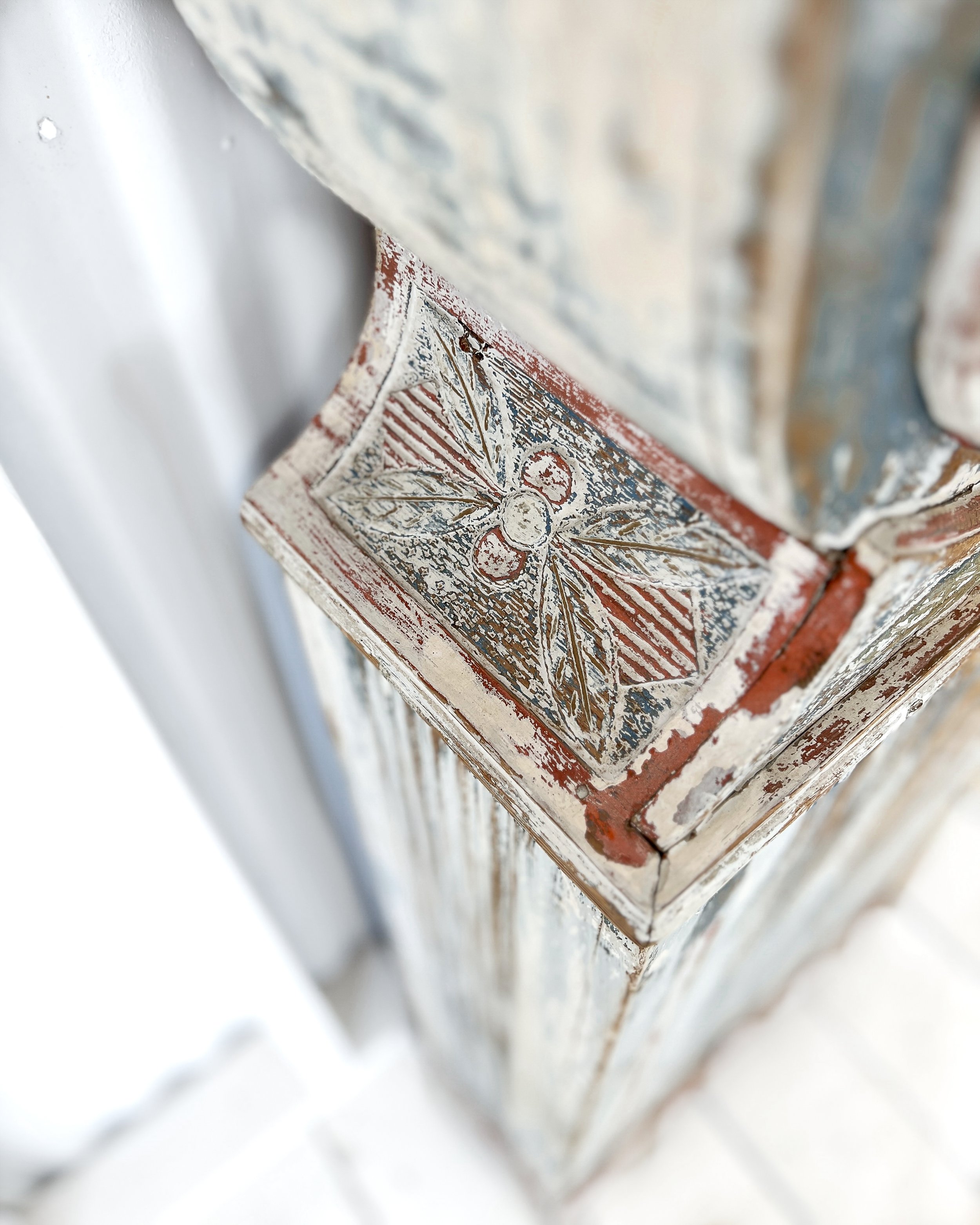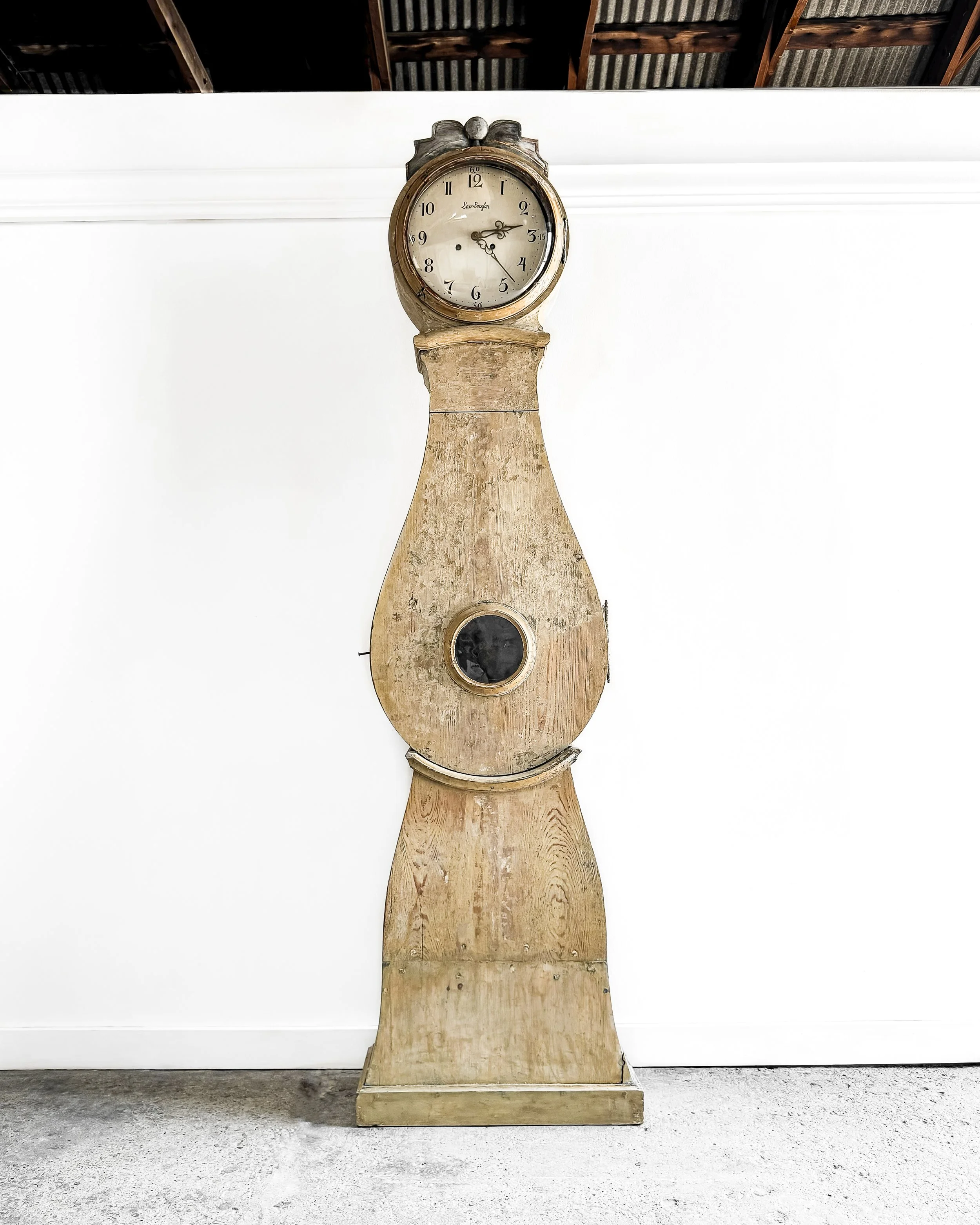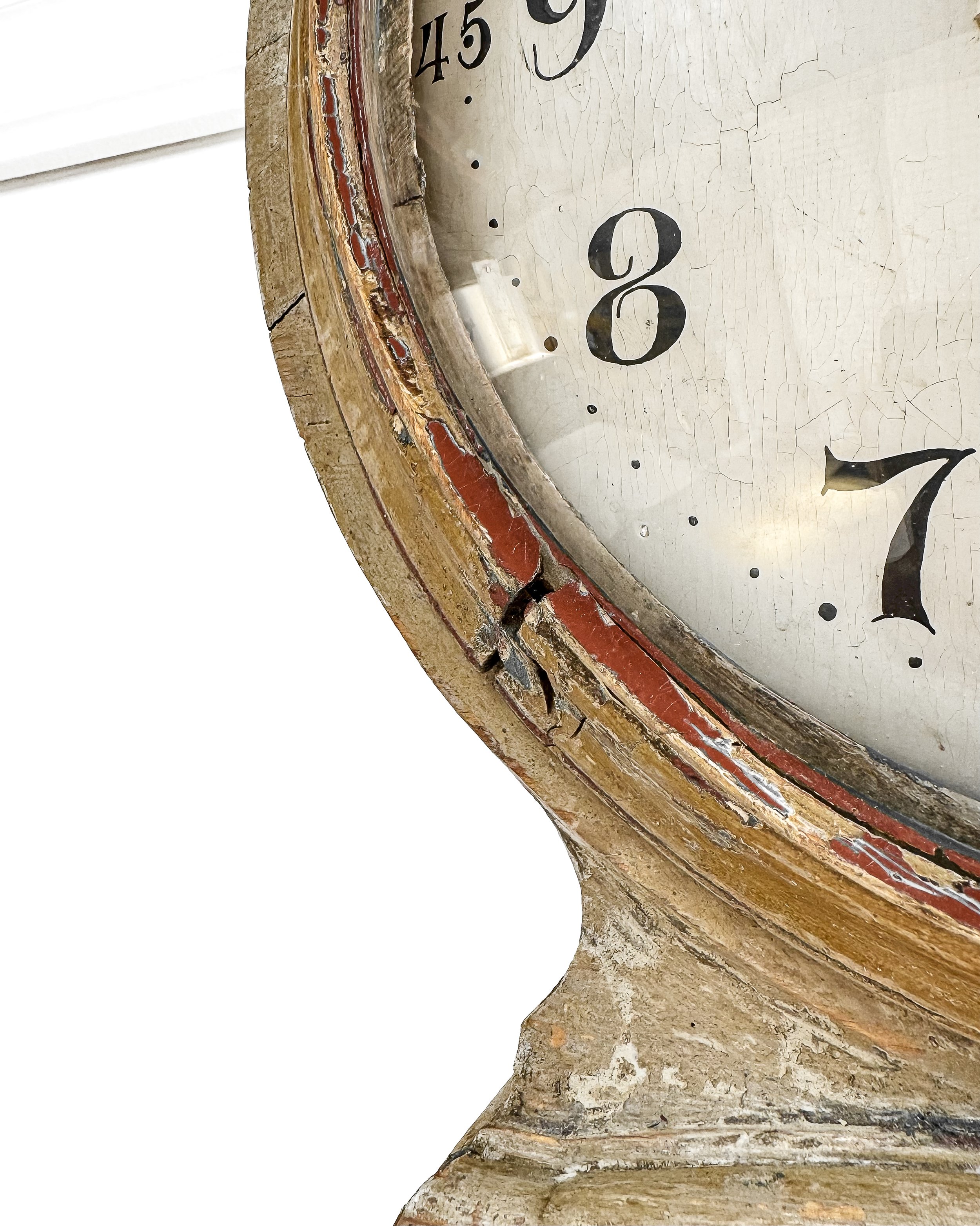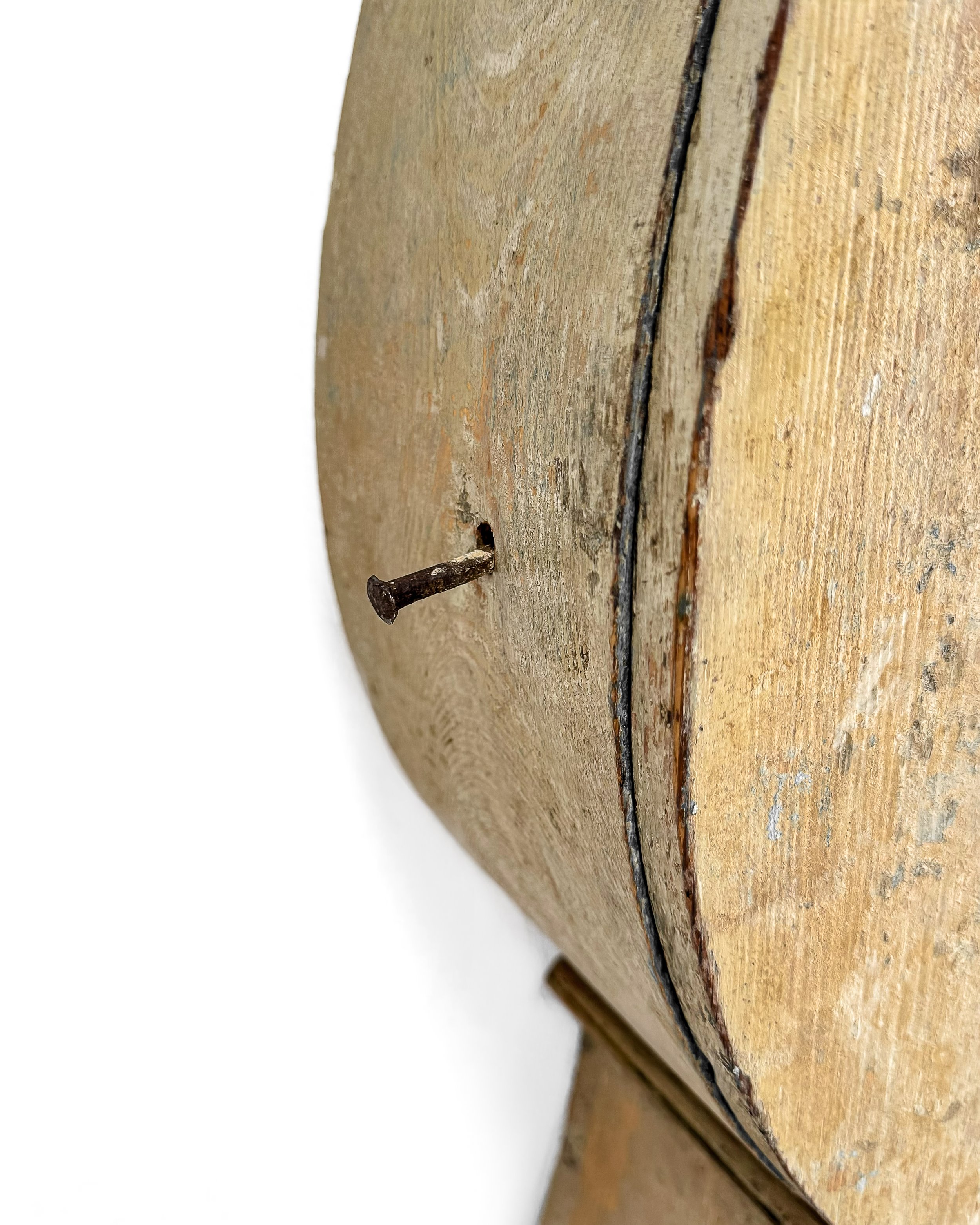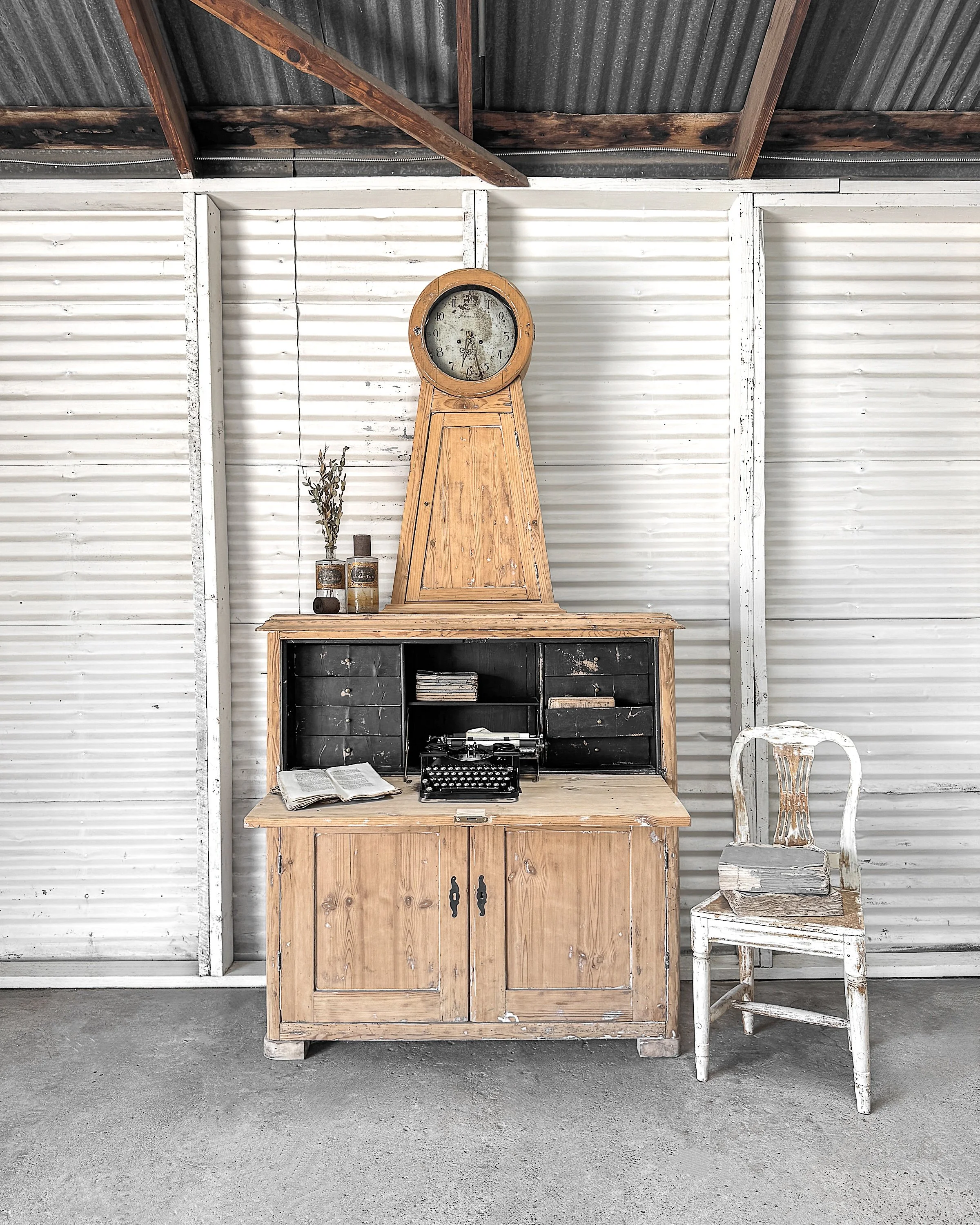 Image 1 of 38
Image 1 of 38

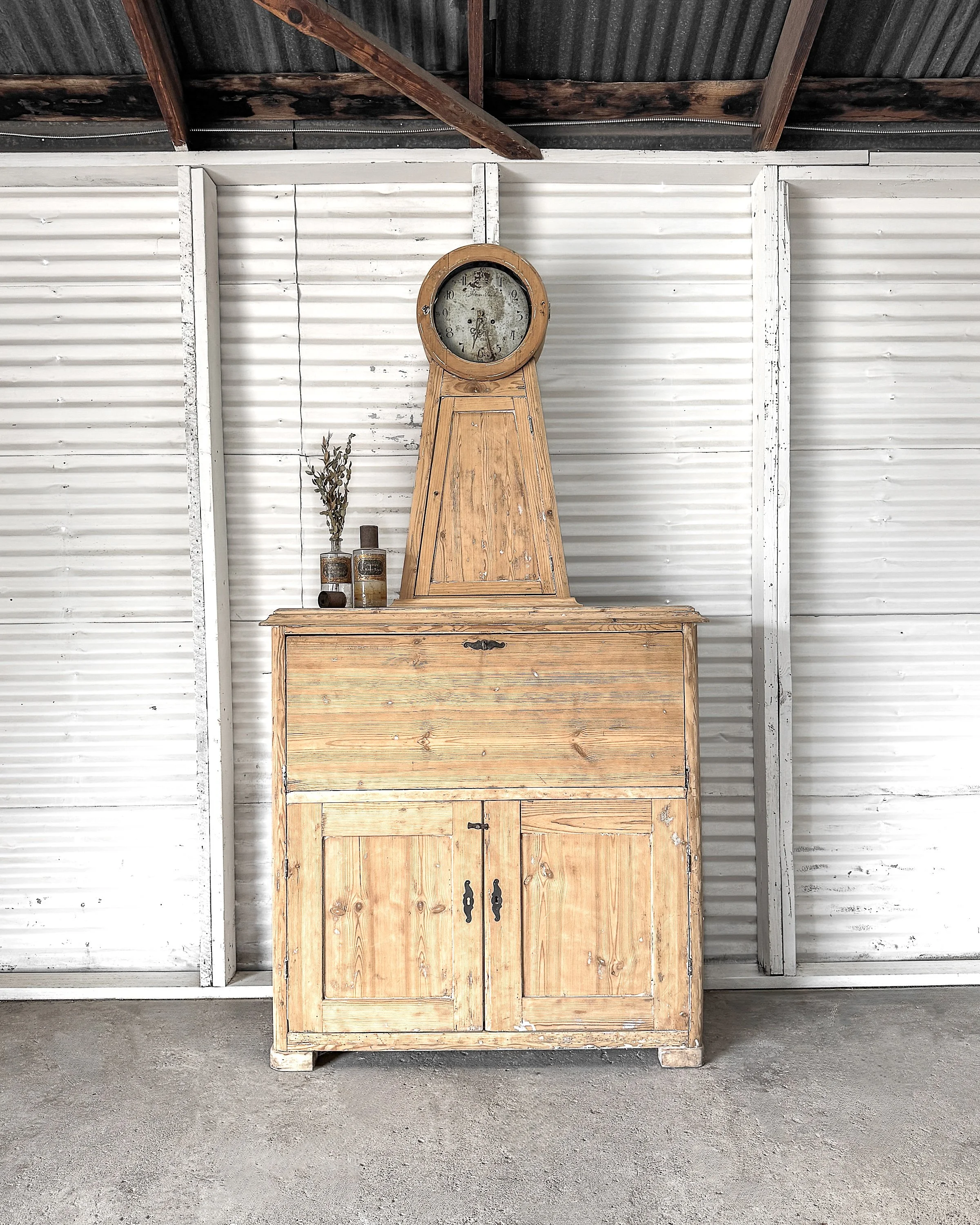 Image 2 of 38
Image 2 of 38

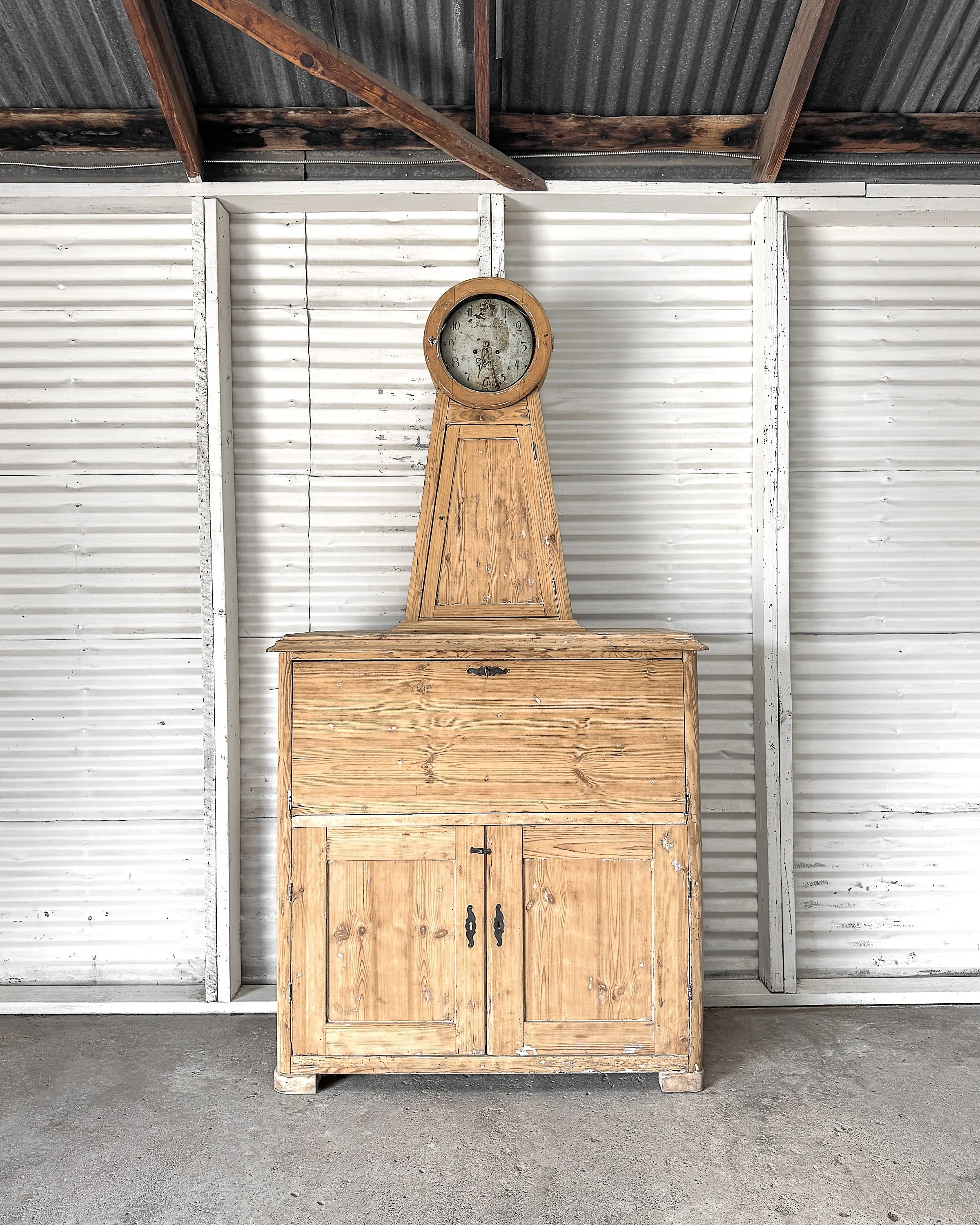 Image 3 of 38
Image 3 of 38

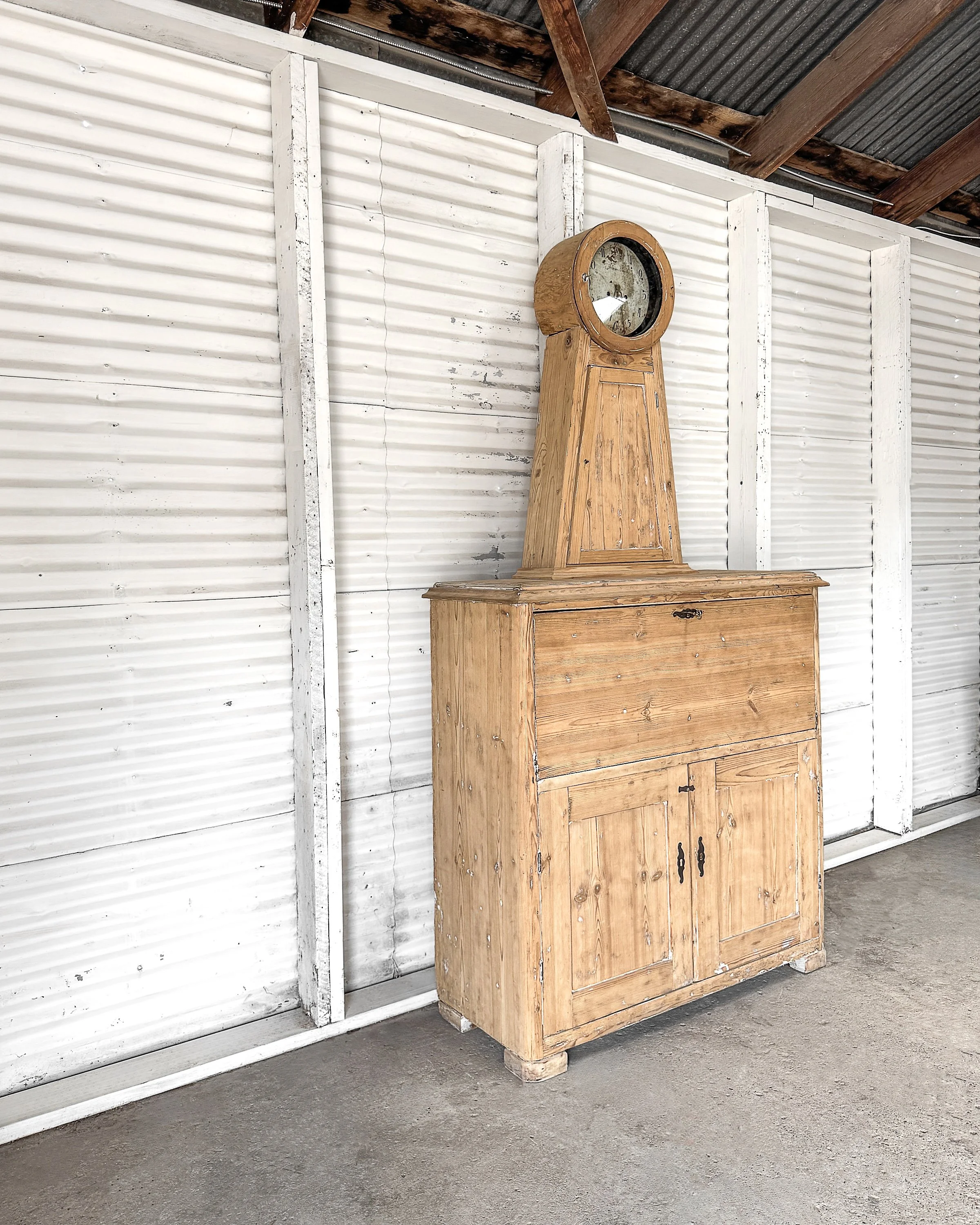 Image 4 of 38
Image 4 of 38

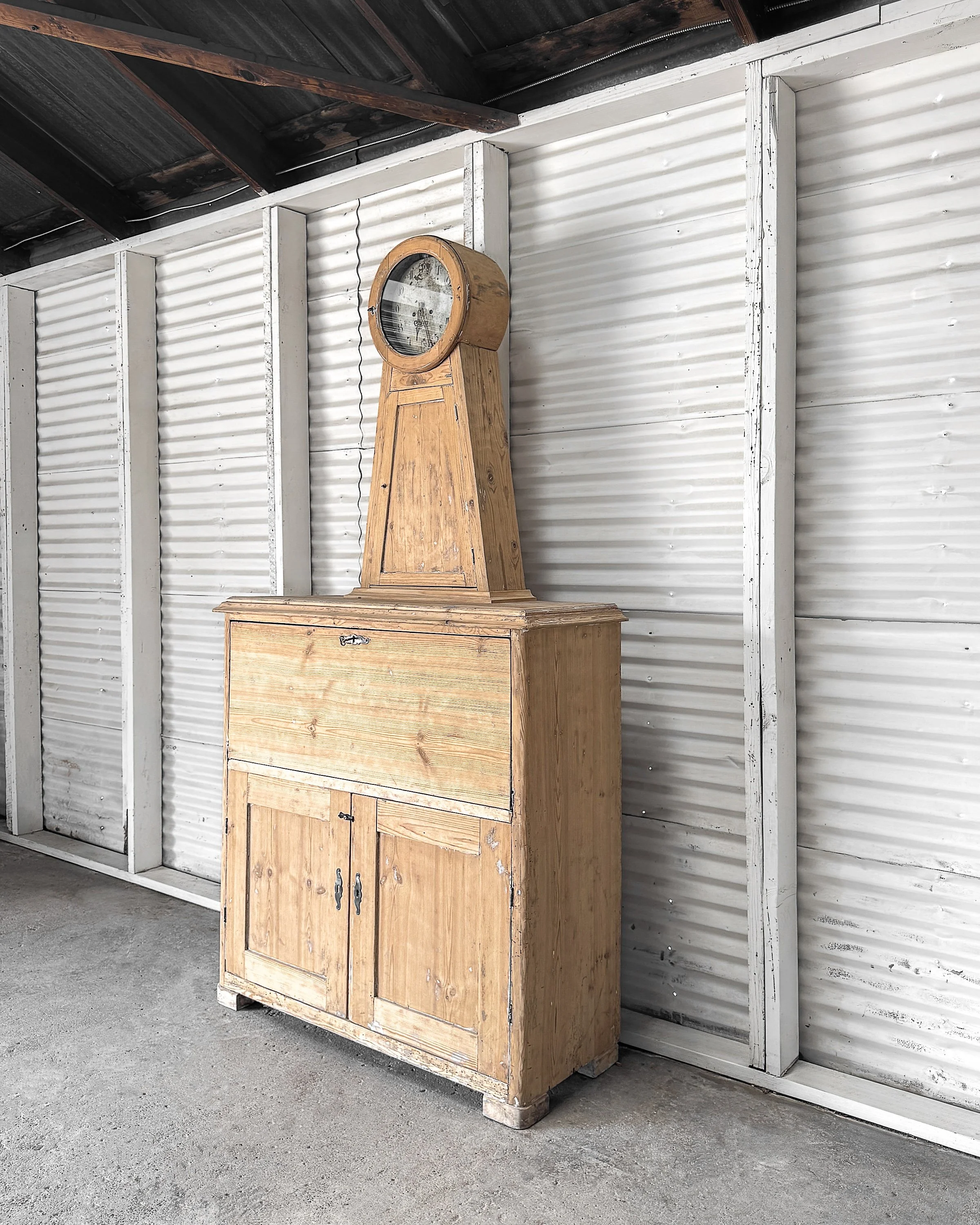 Image 5 of 38
Image 5 of 38

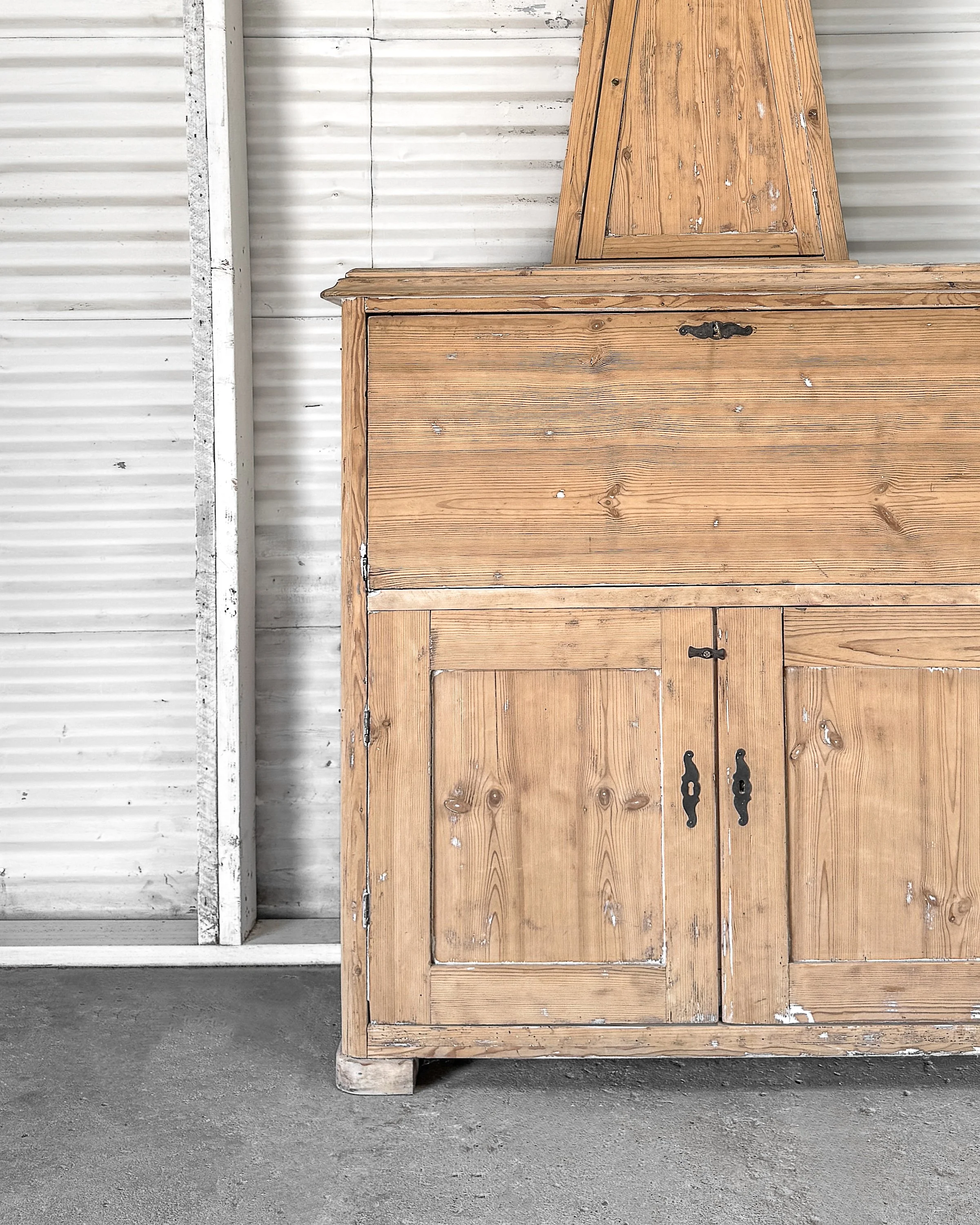 Image 6 of 38
Image 6 of 38

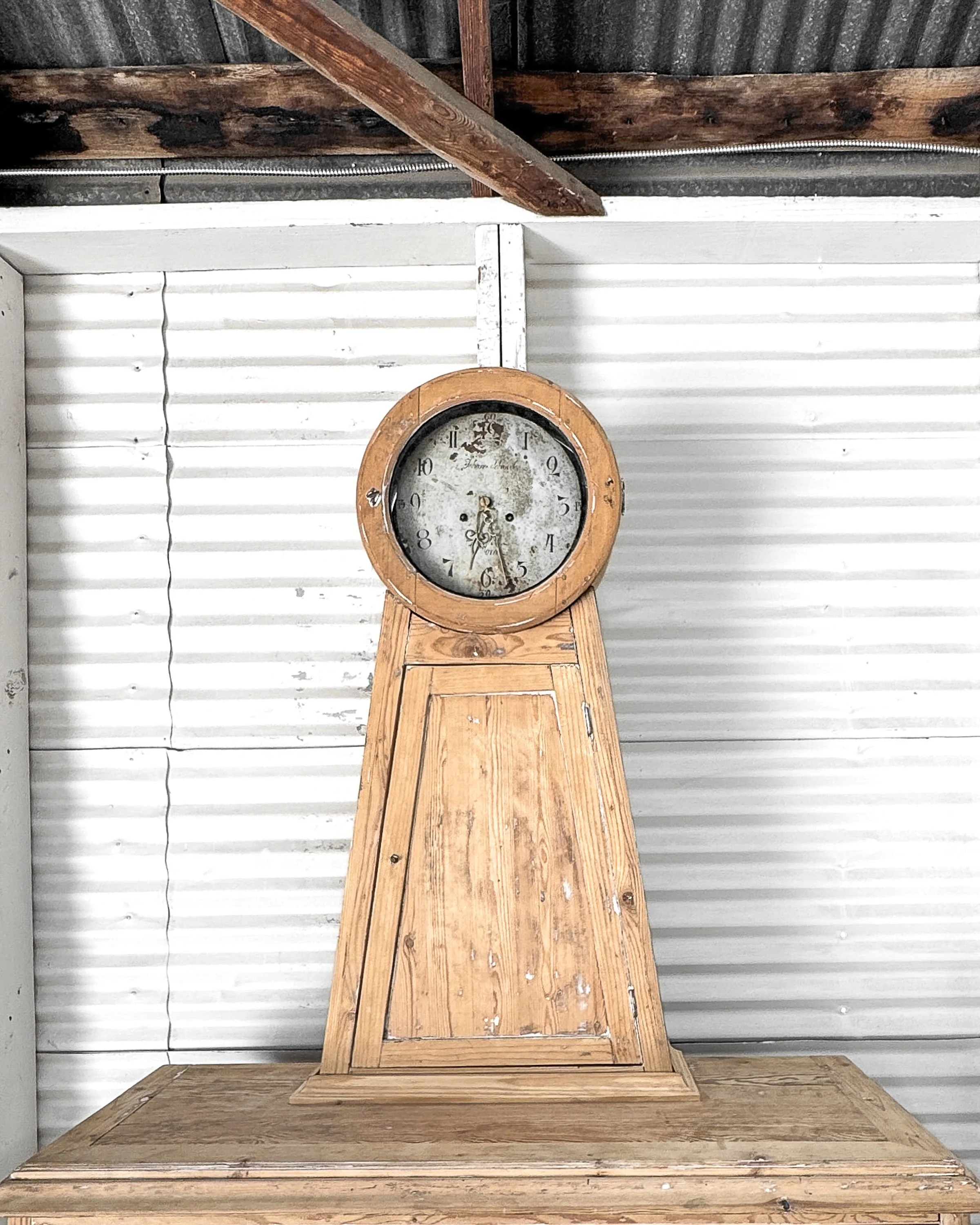 Image 7 of 38
Image 7 of 38

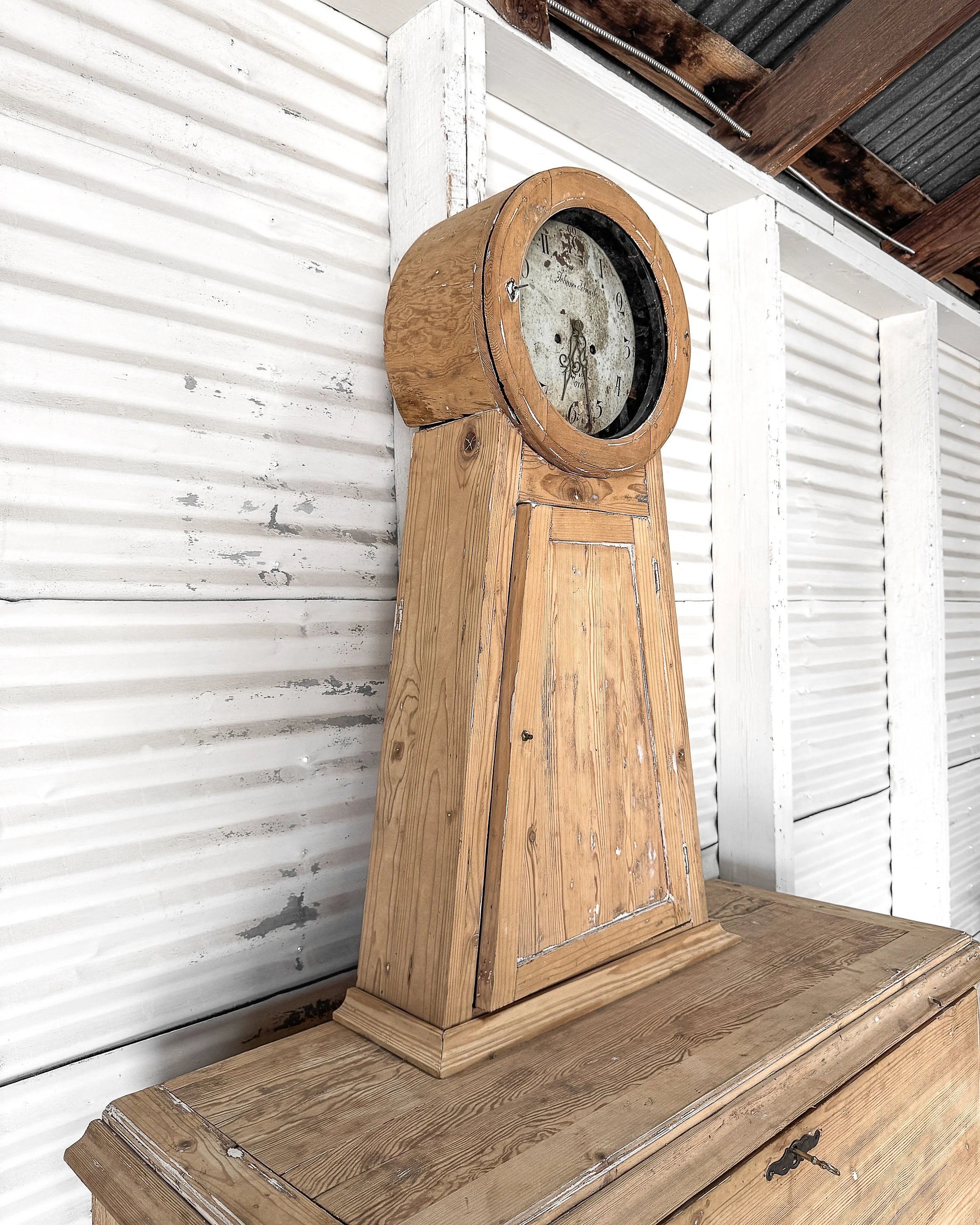 Image 8 of 38
Image 8 of 38

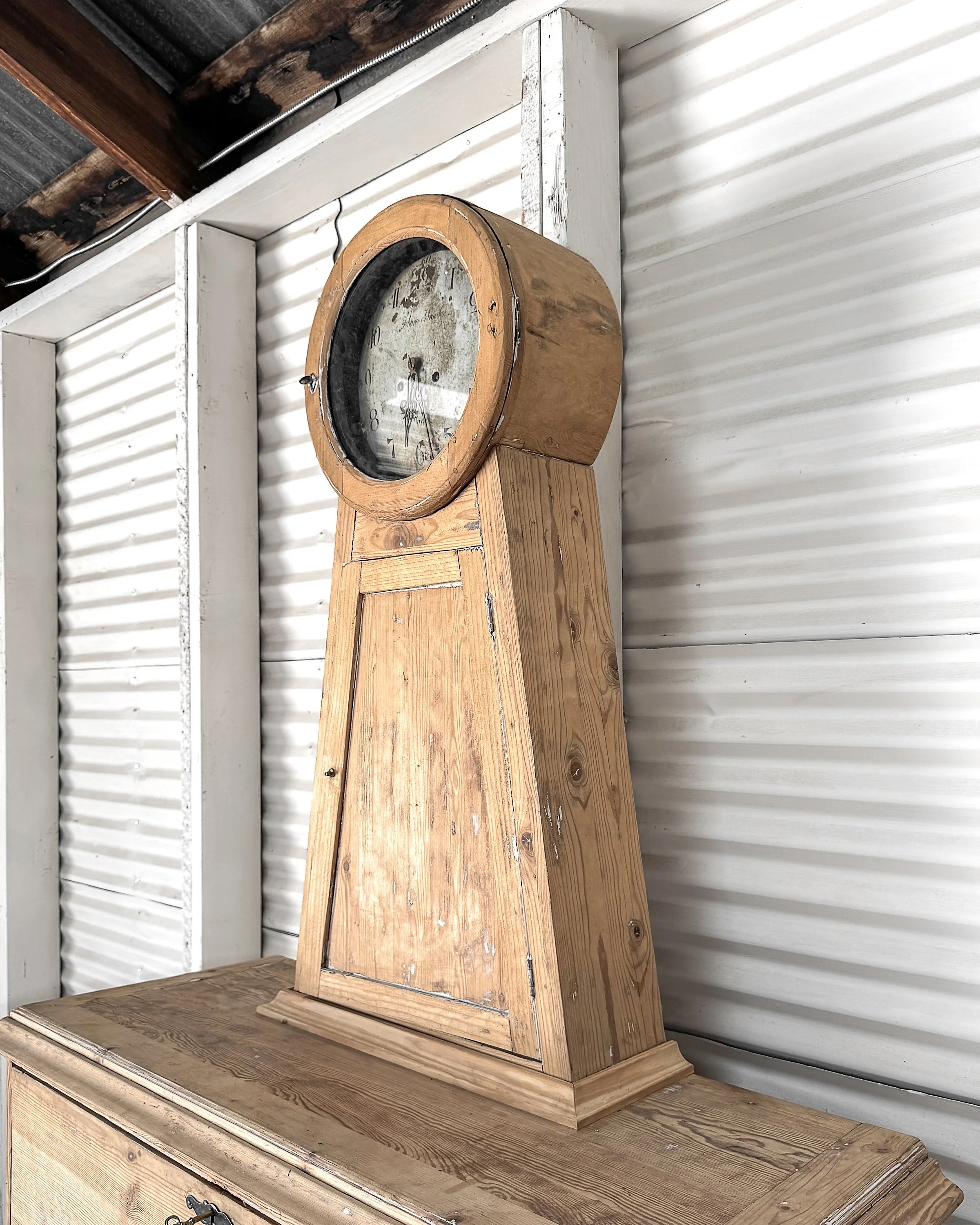 Image 9 of 38
Image 9 of 38

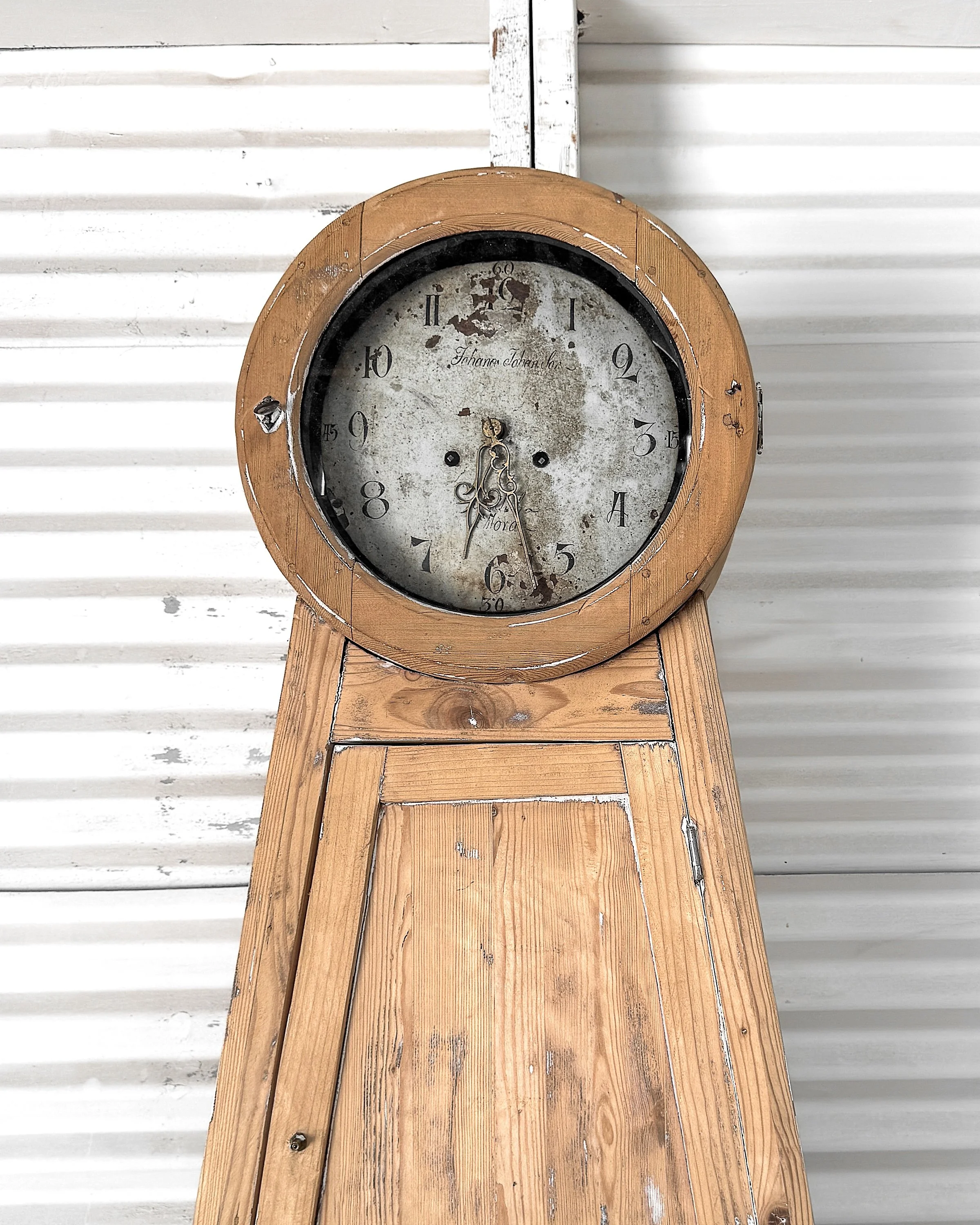 Image 10 of 38
Image 10 of 38

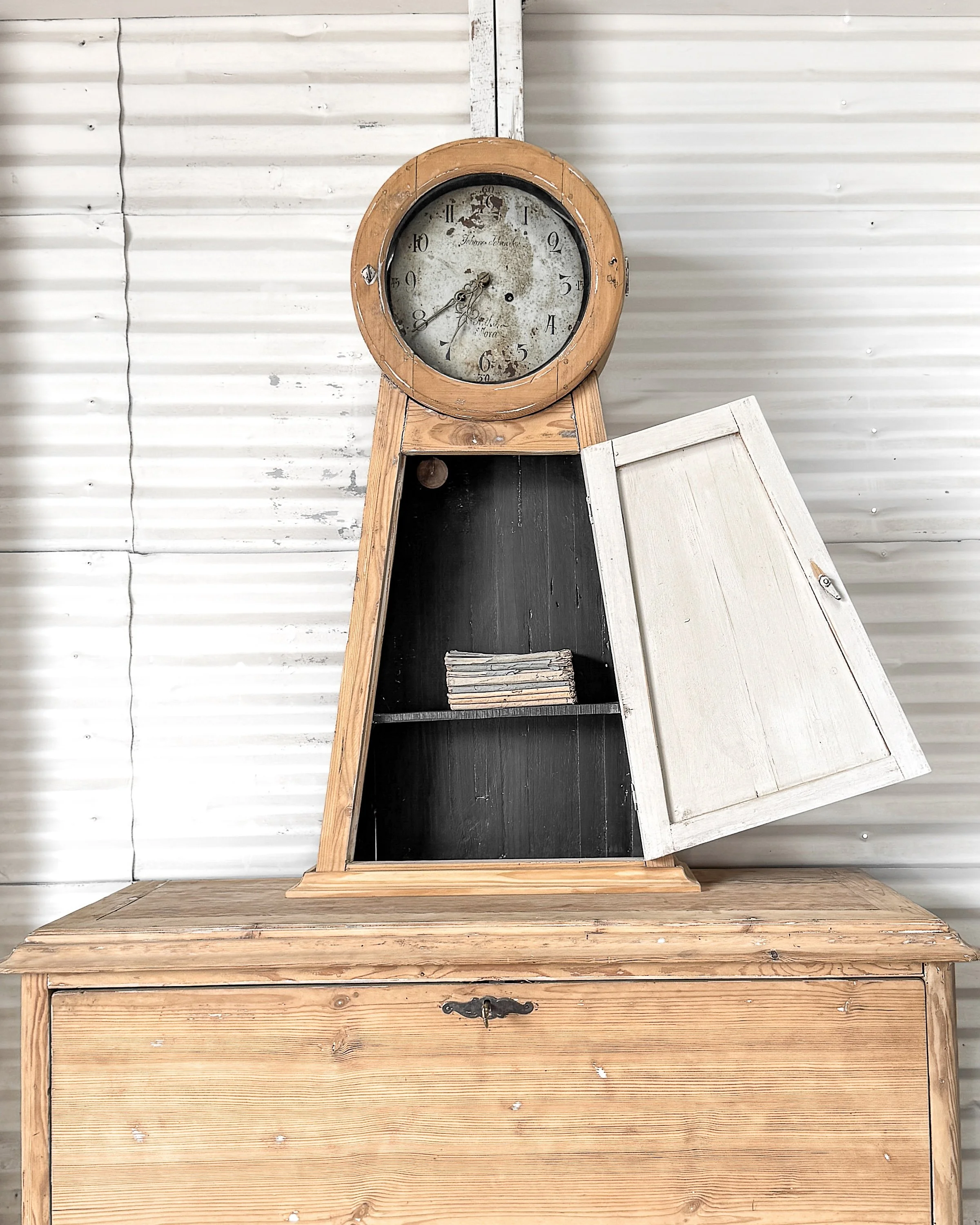 Image 11 of 38
Image 11 of 38

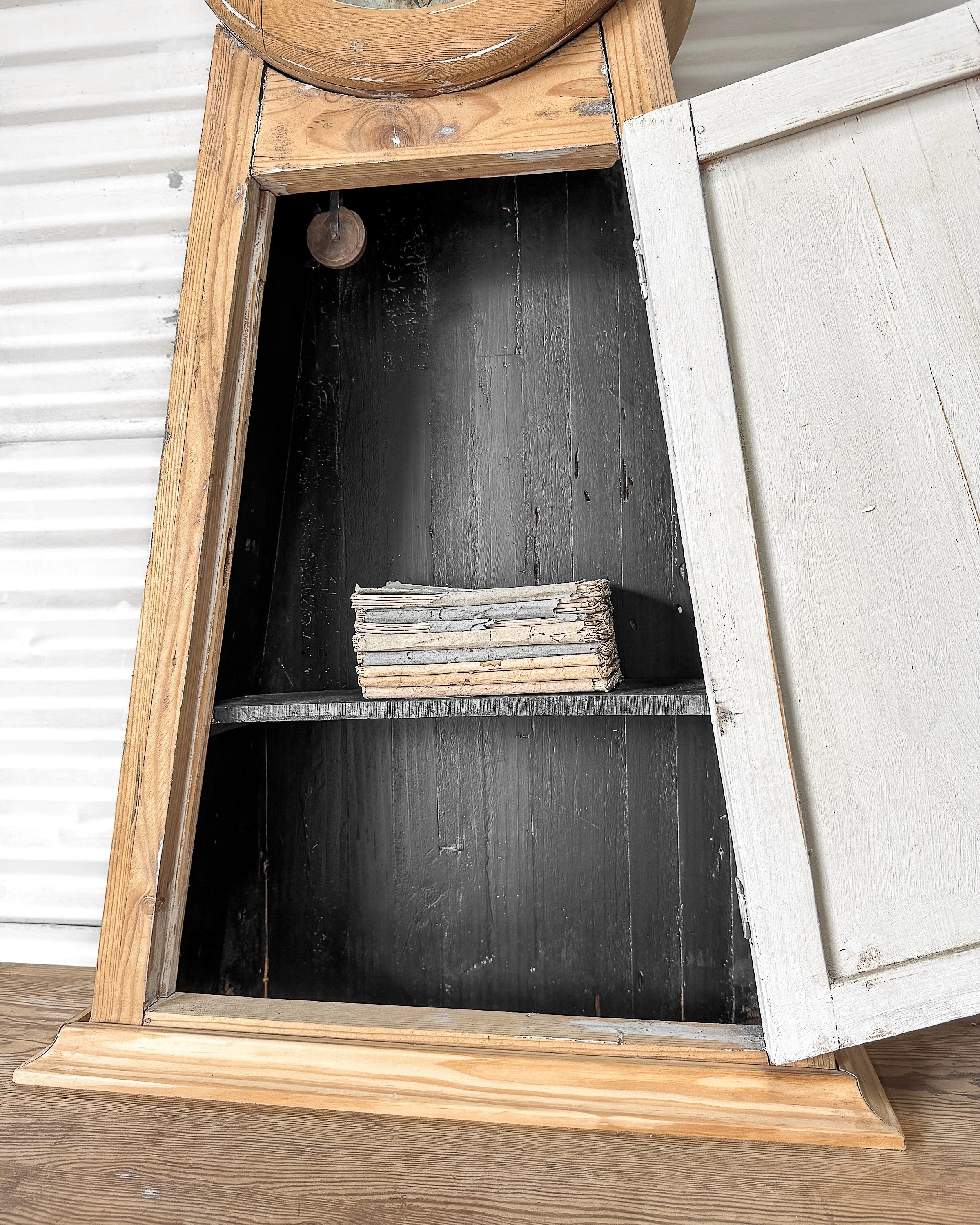 Image 12 of 38
Image 12 of 38

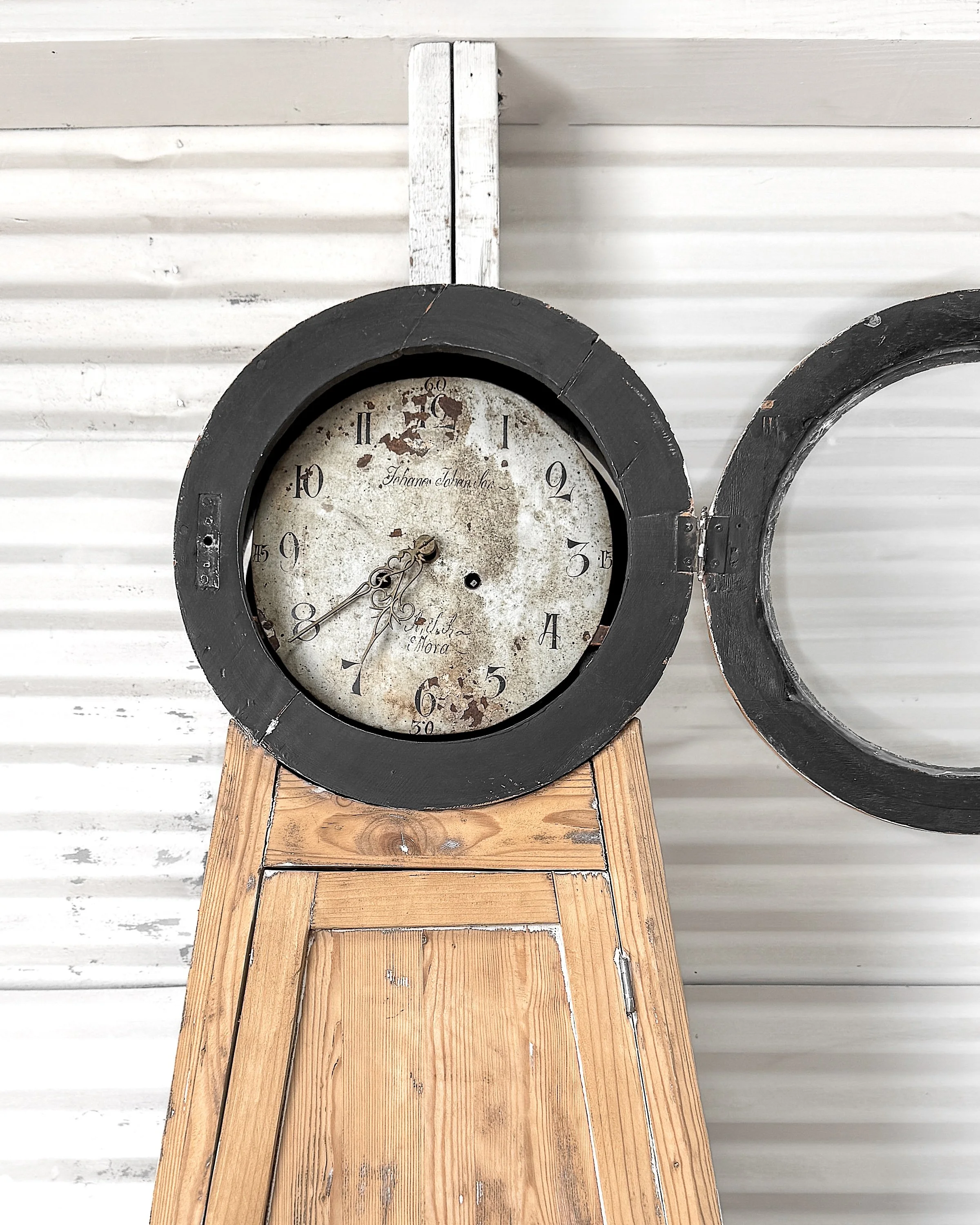 Image 13 of 38
Image 13 of 38

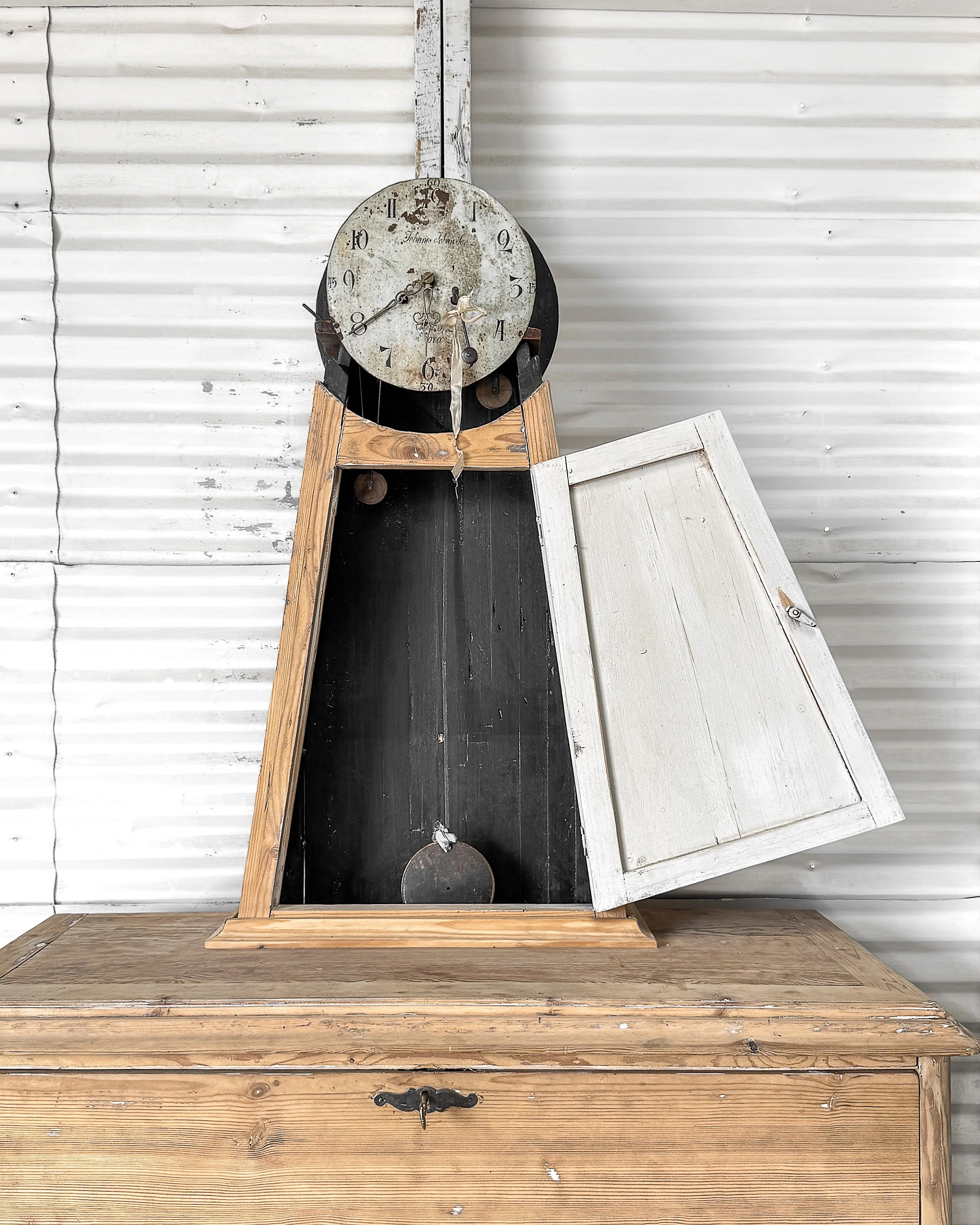 Image 14 of 38
Image 14 of 38

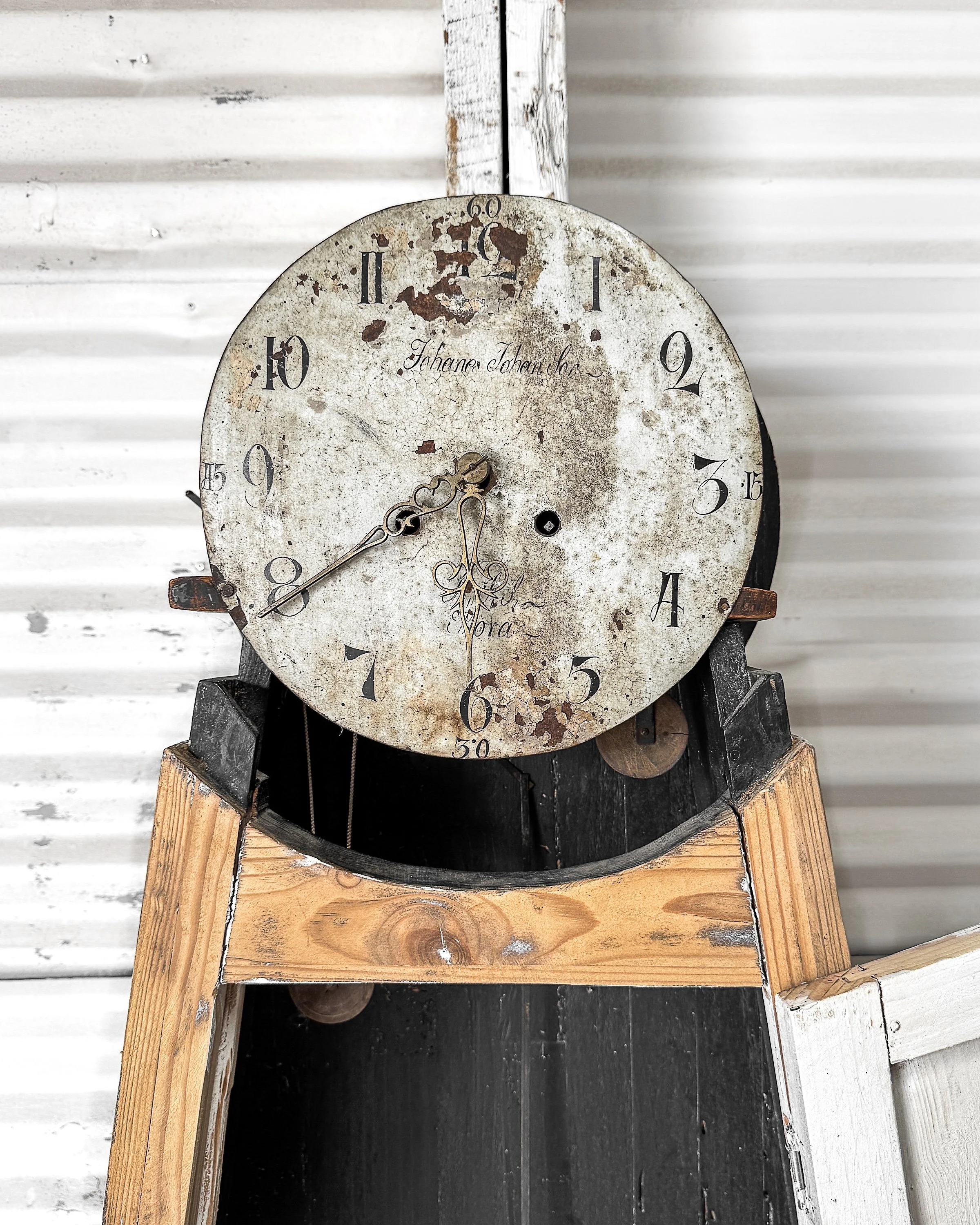 Image 15 of 38
Image 15 of 38

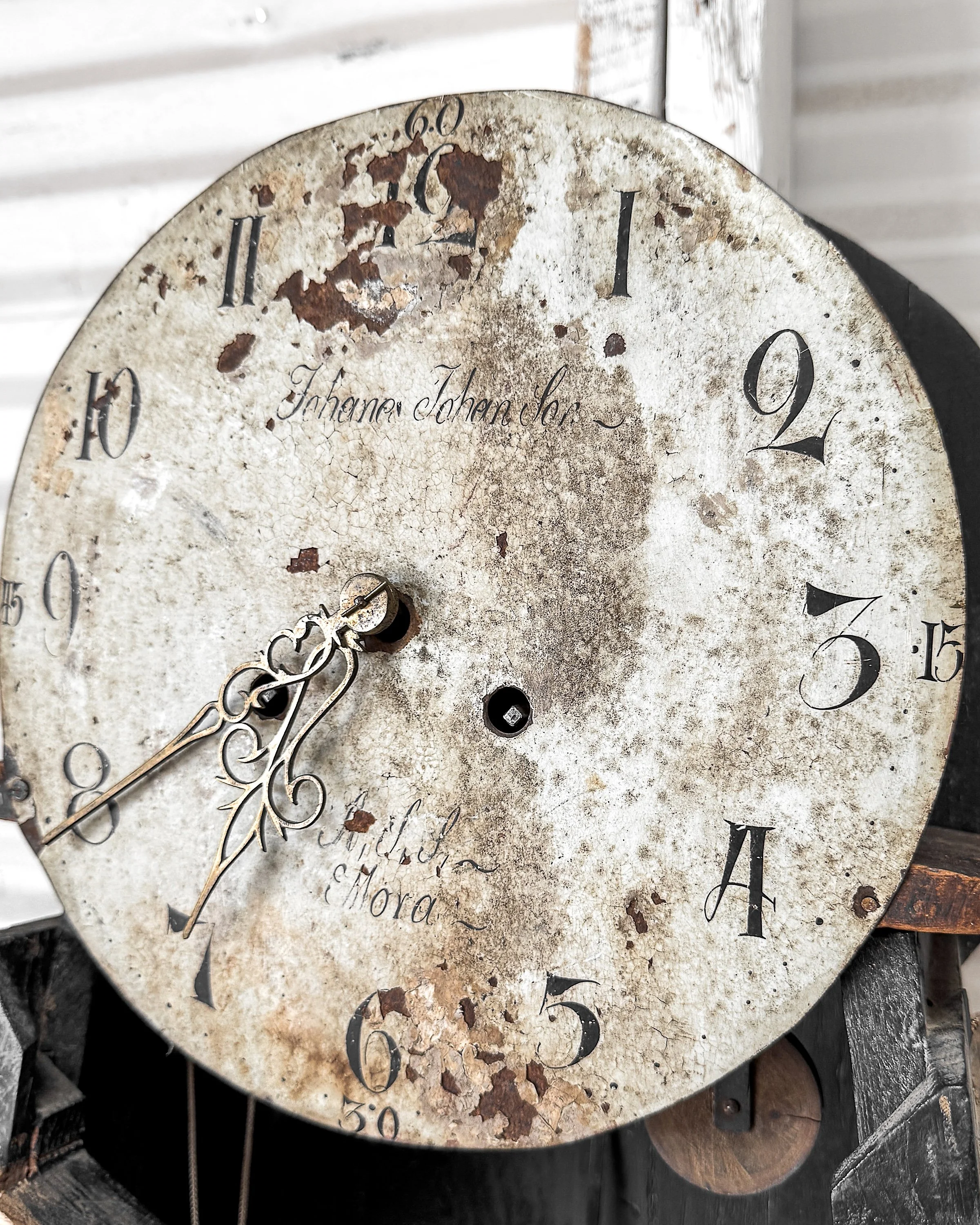 Image 16 of 38
Image 16 of 38

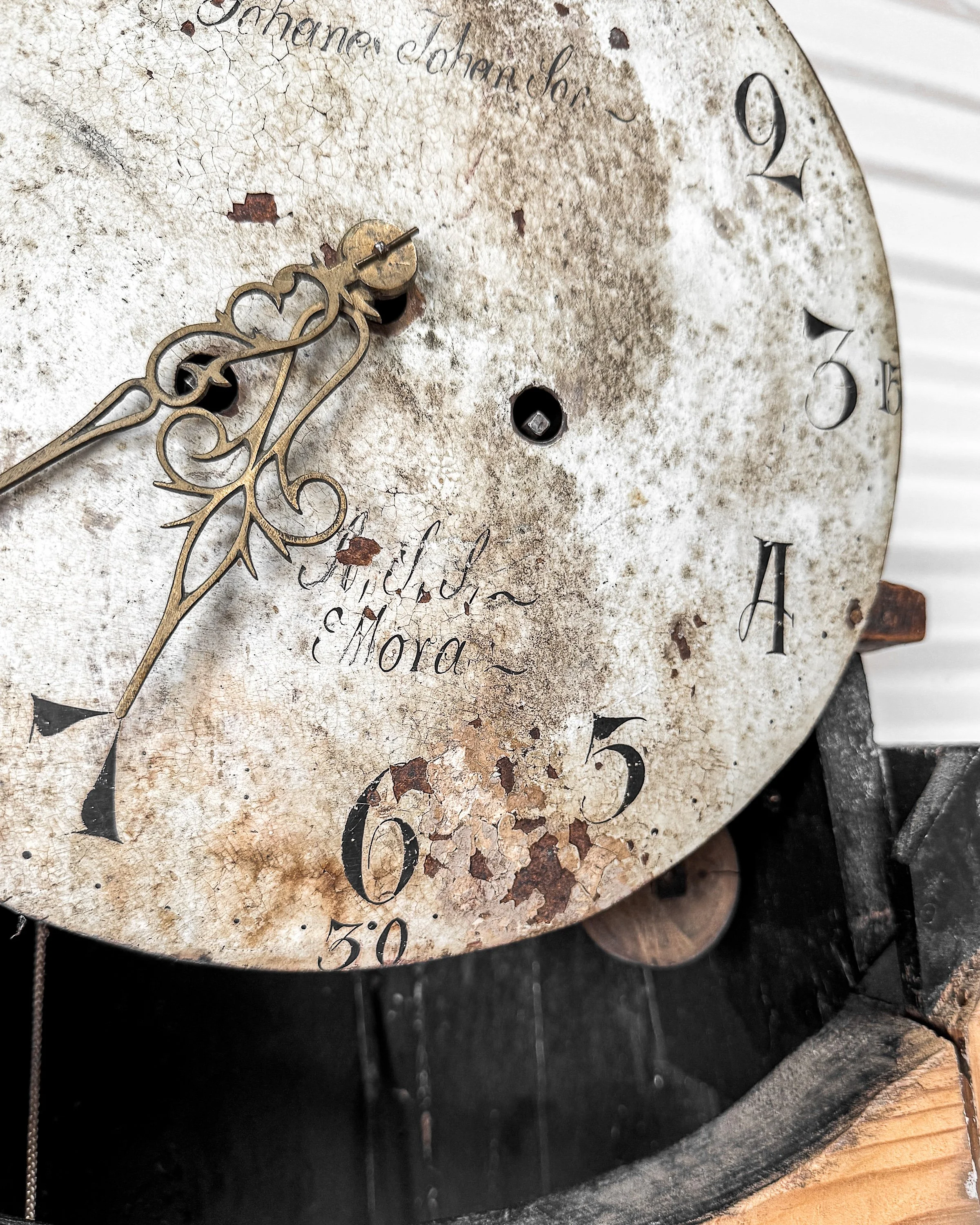 Image 17 of 38
Image 17 of 38

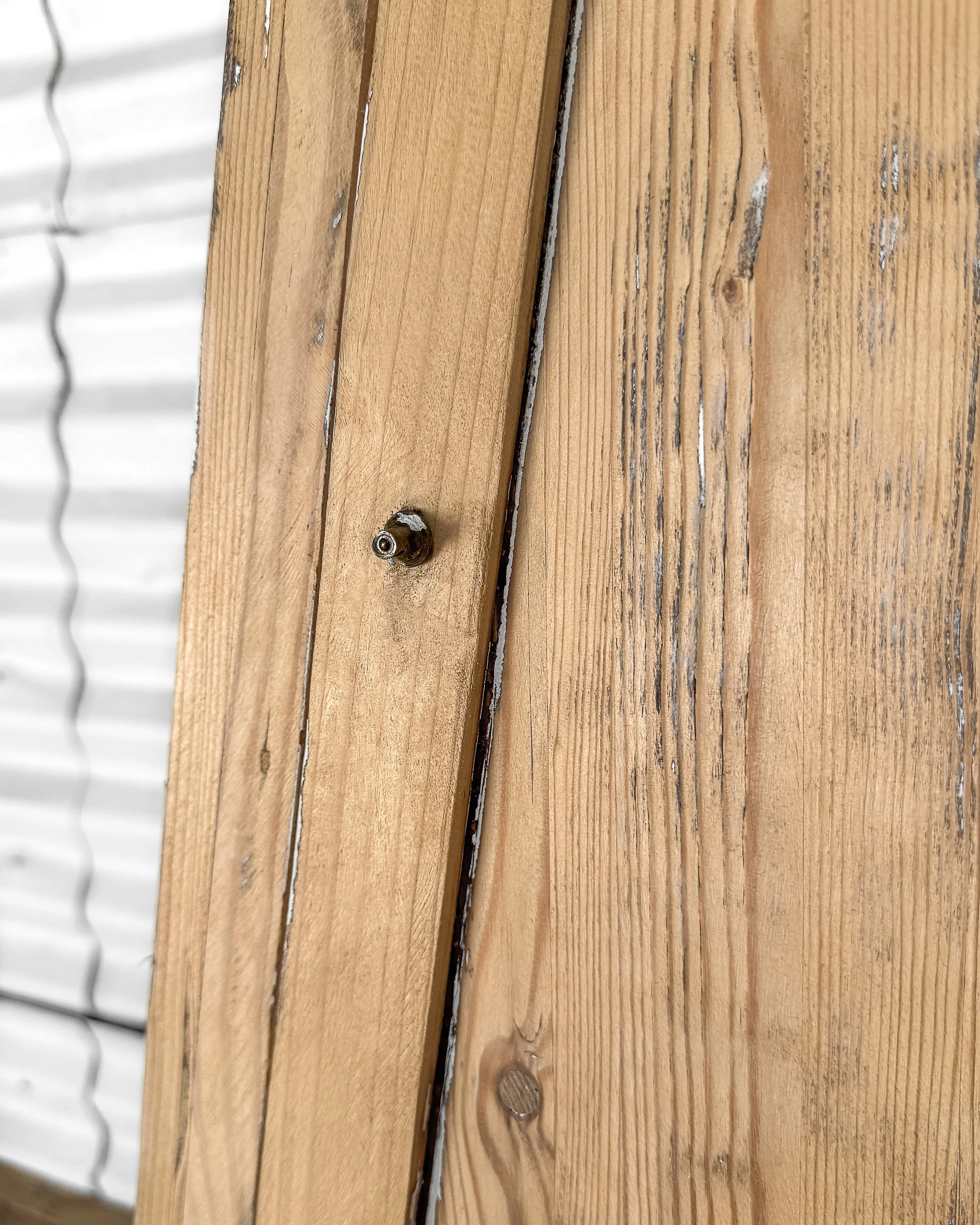 Image 18 of 38
Image 18 of 38

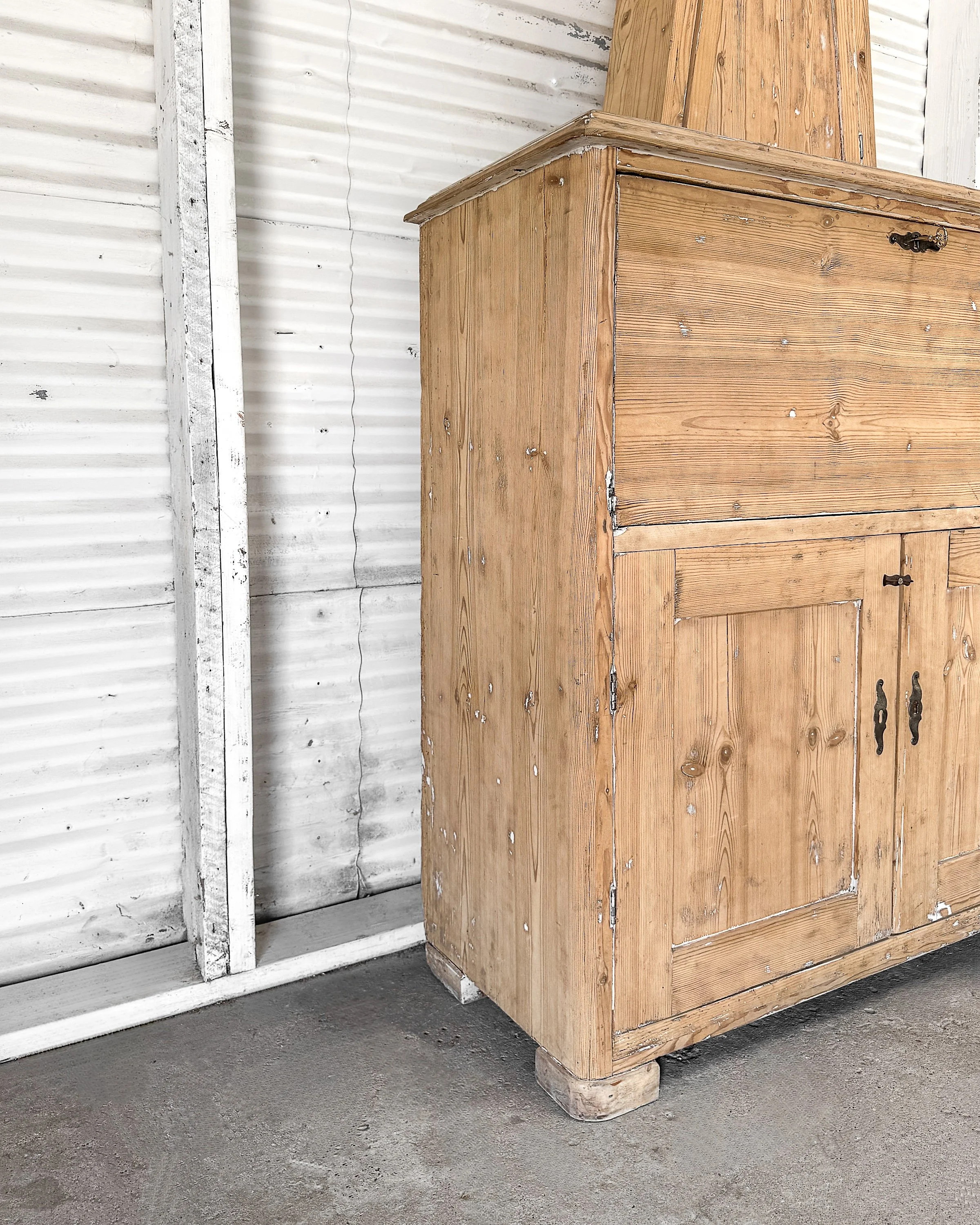 Image 19 of 38
Image 19 of 38

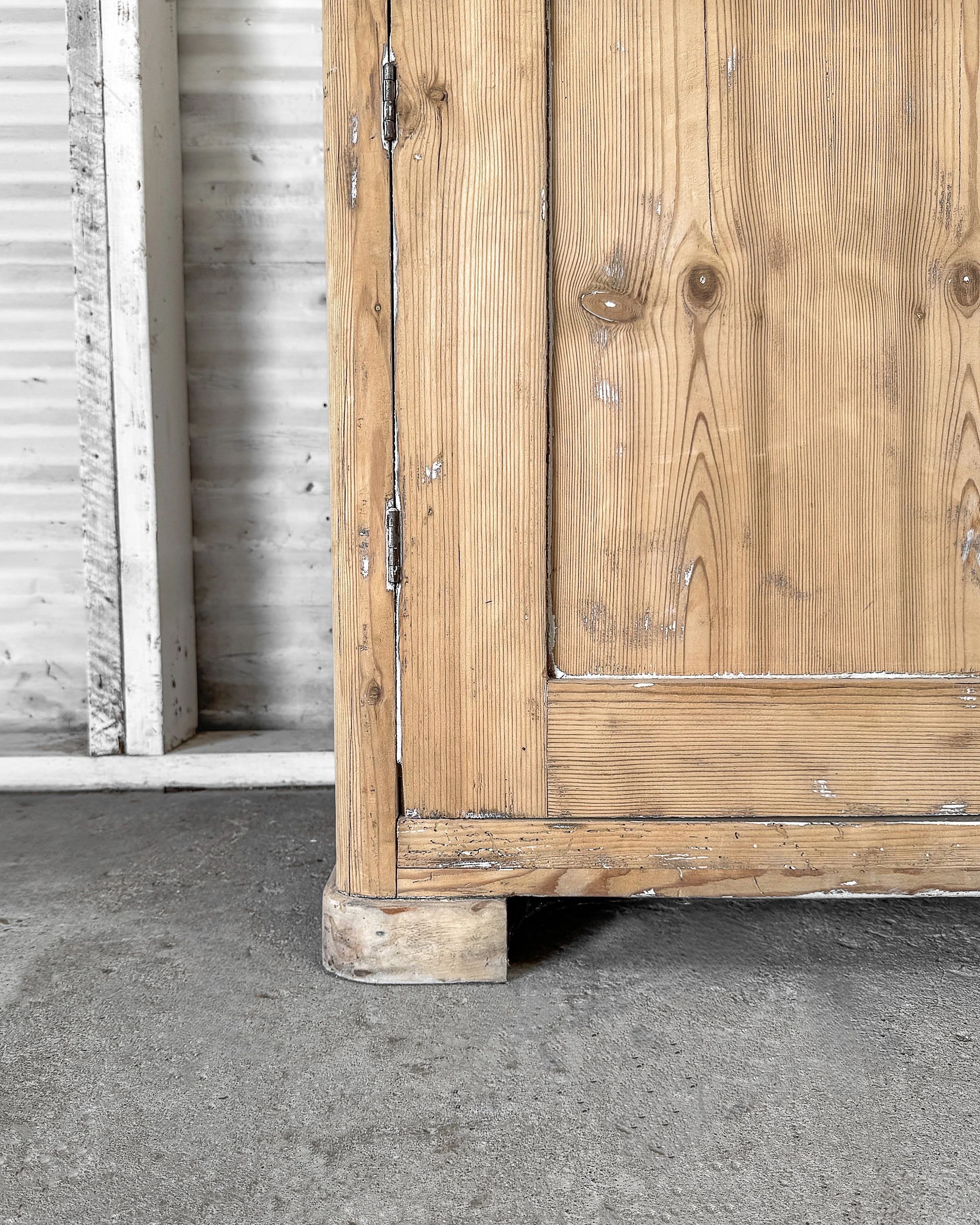 Image 20 of 38
Image 20 of 38

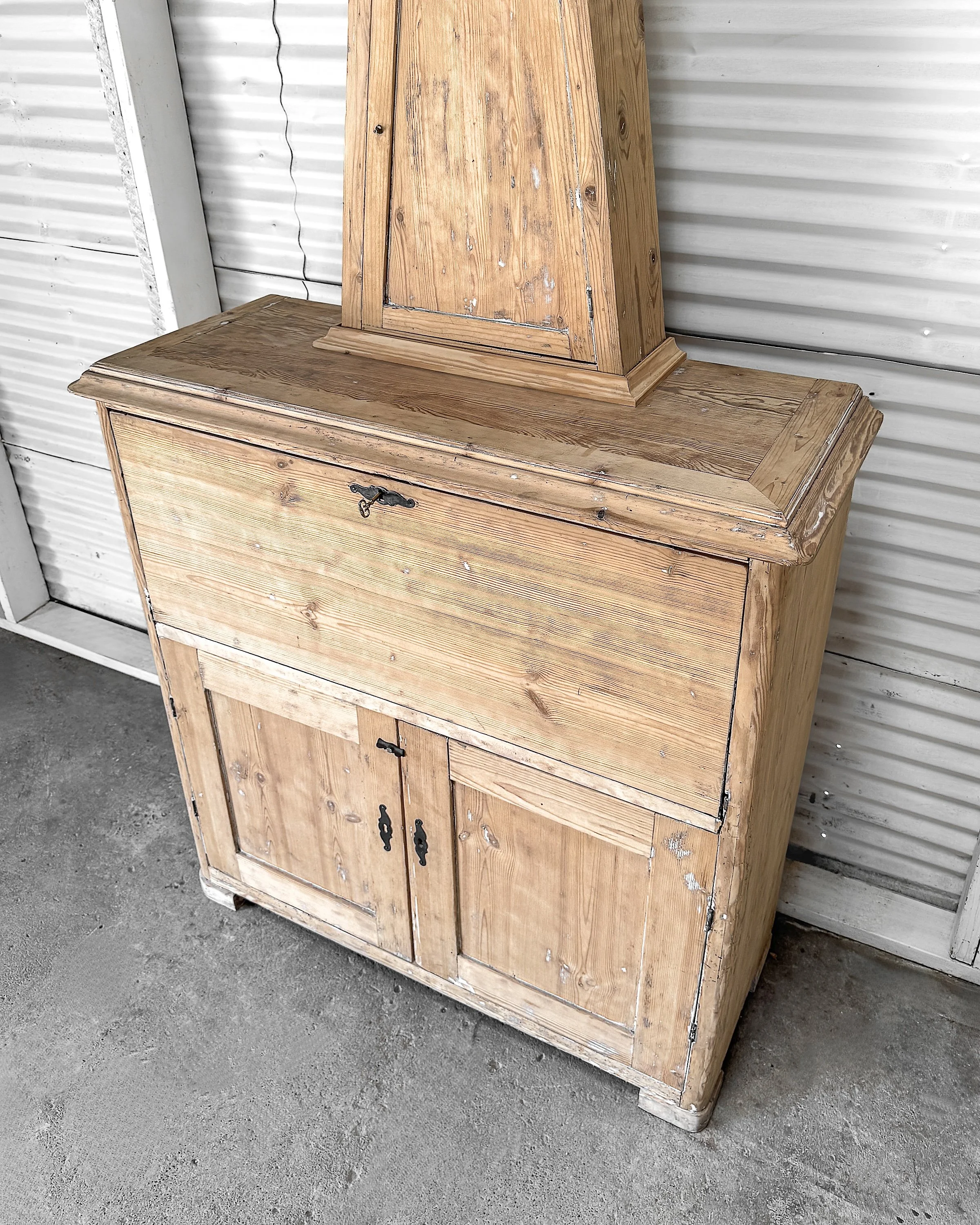 Image 21 of 38
Image 21 of 38

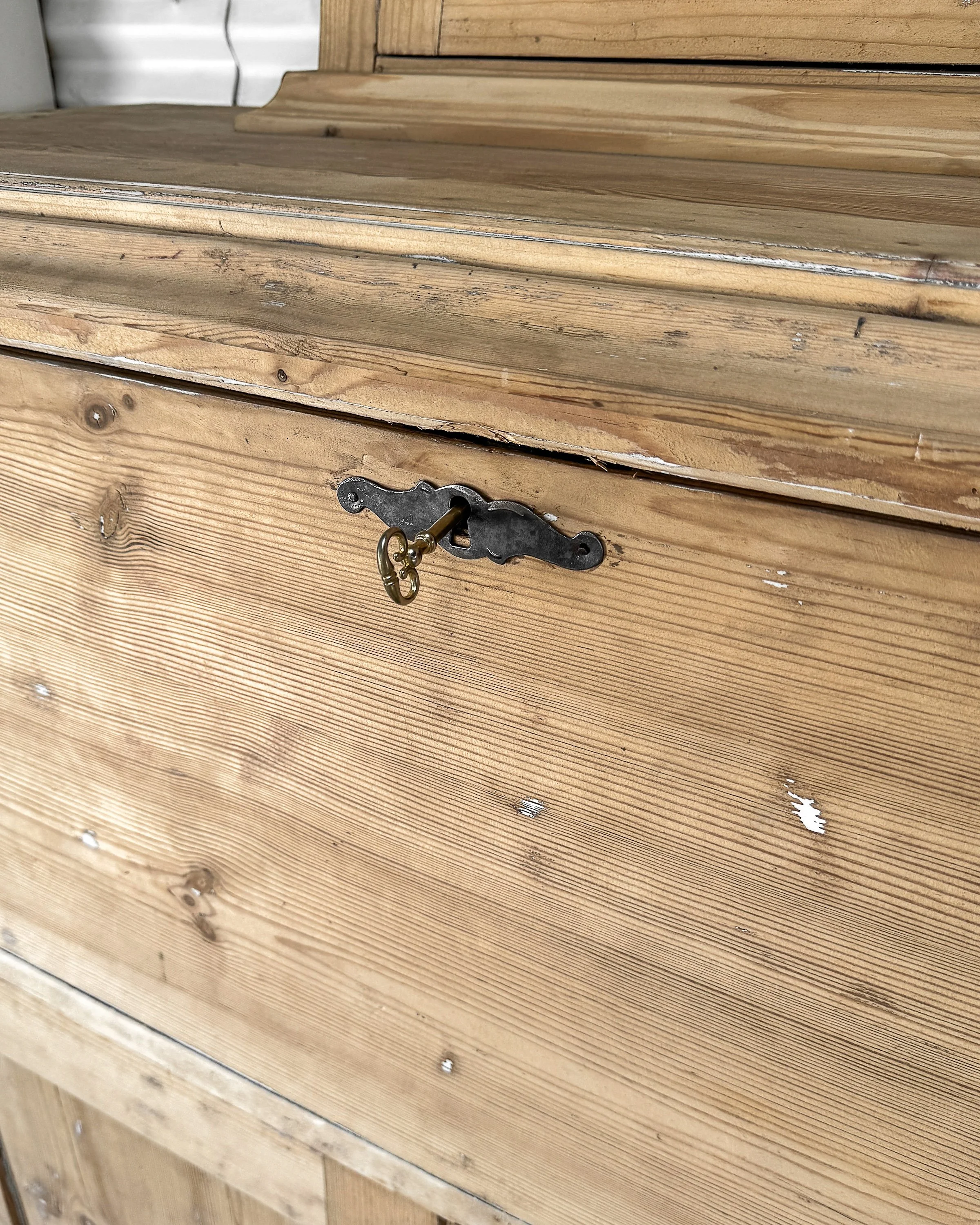 Image 22 of 38
Image 22 of 38

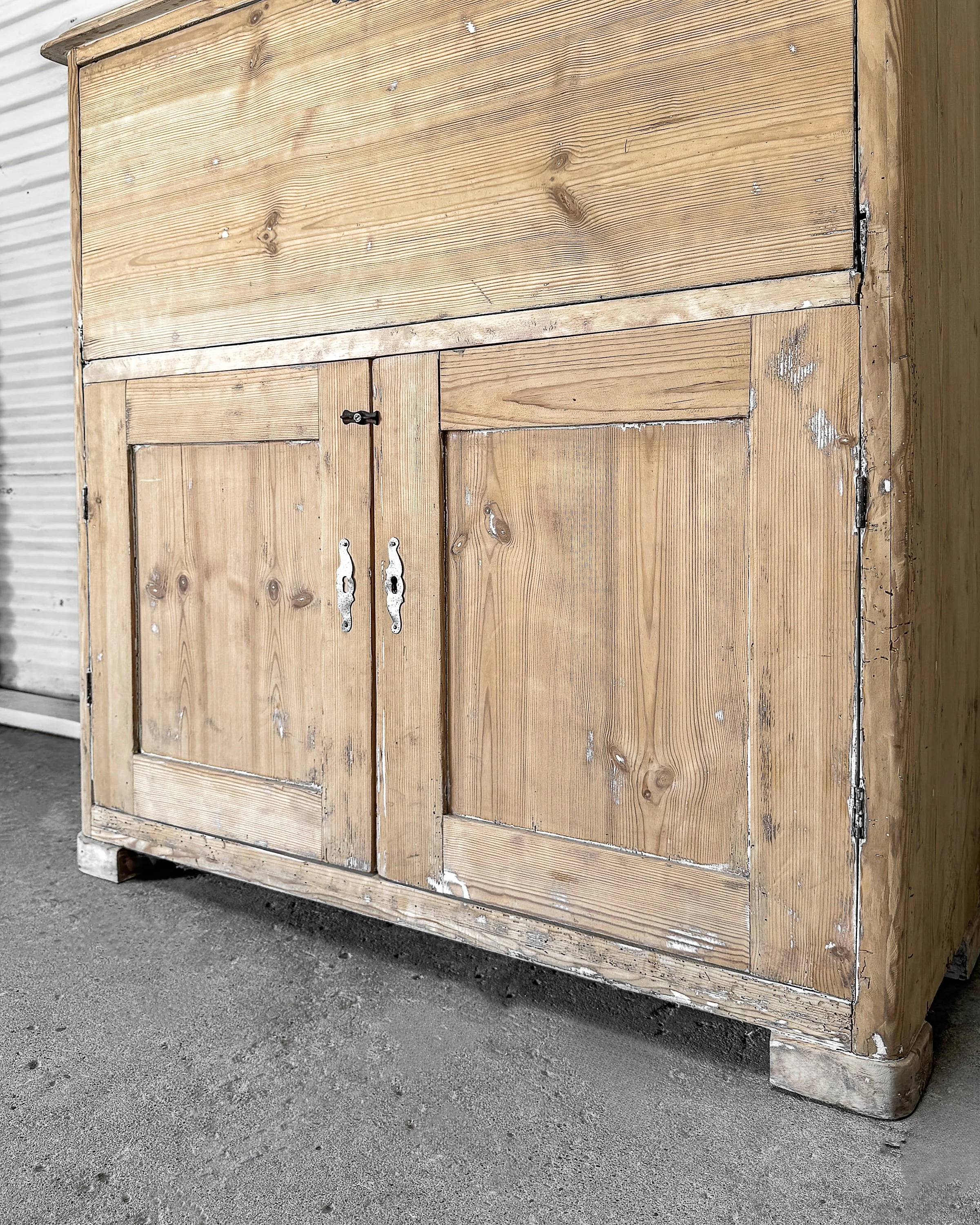 Image 23 of 38
Image 23 of 38

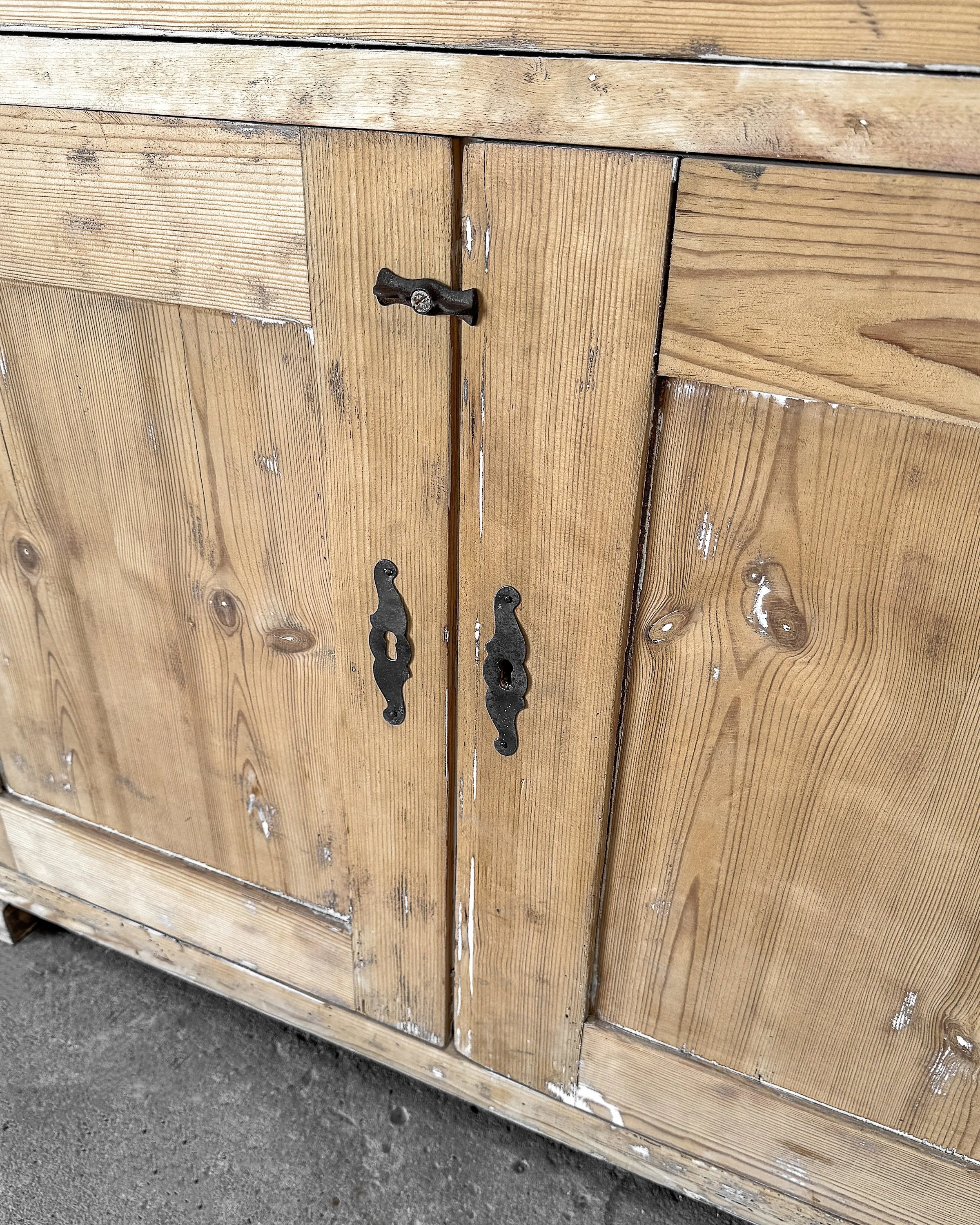 Image 24 of 38
Image 24 of 38

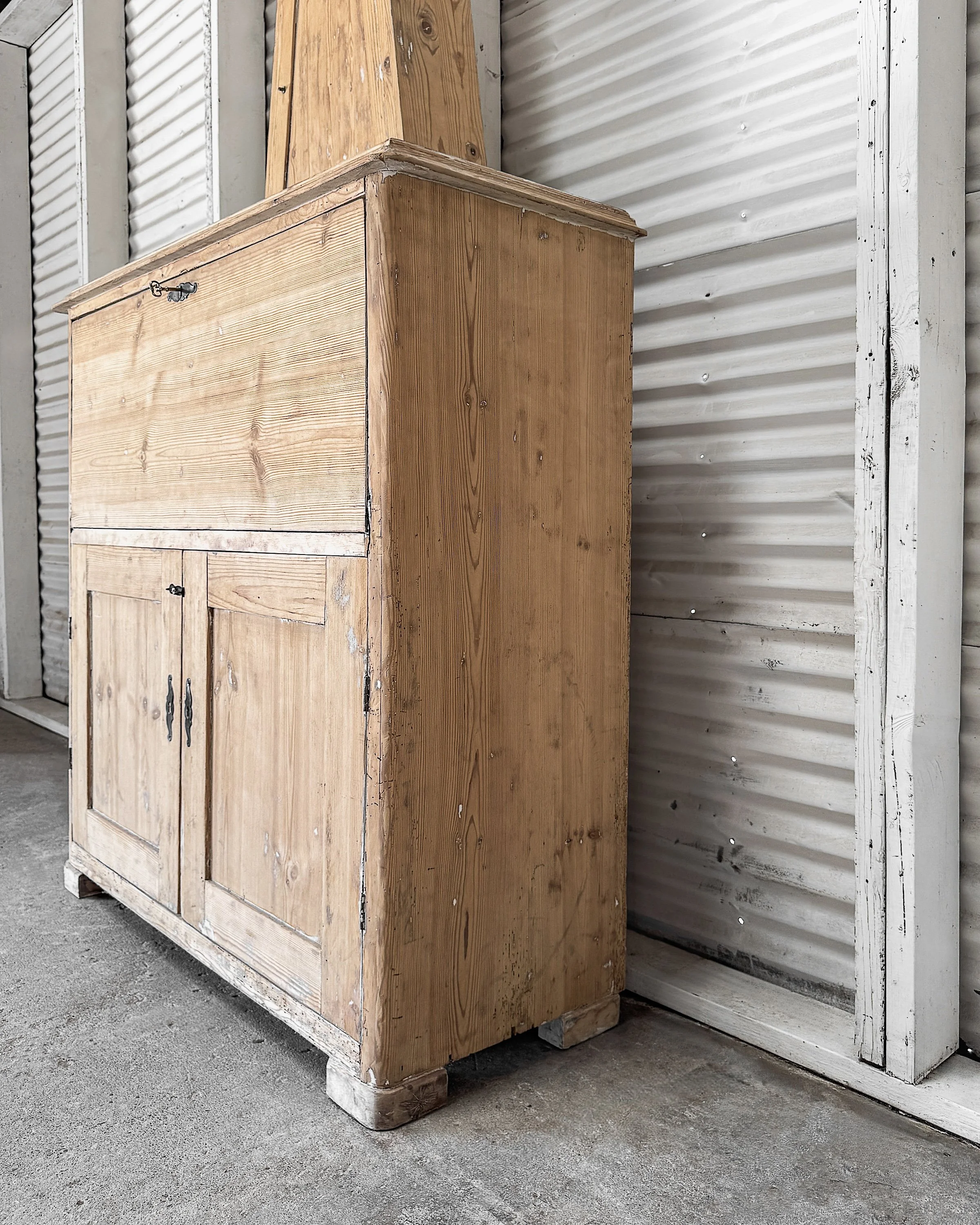 Image 25 of 38
Image 25 of 38

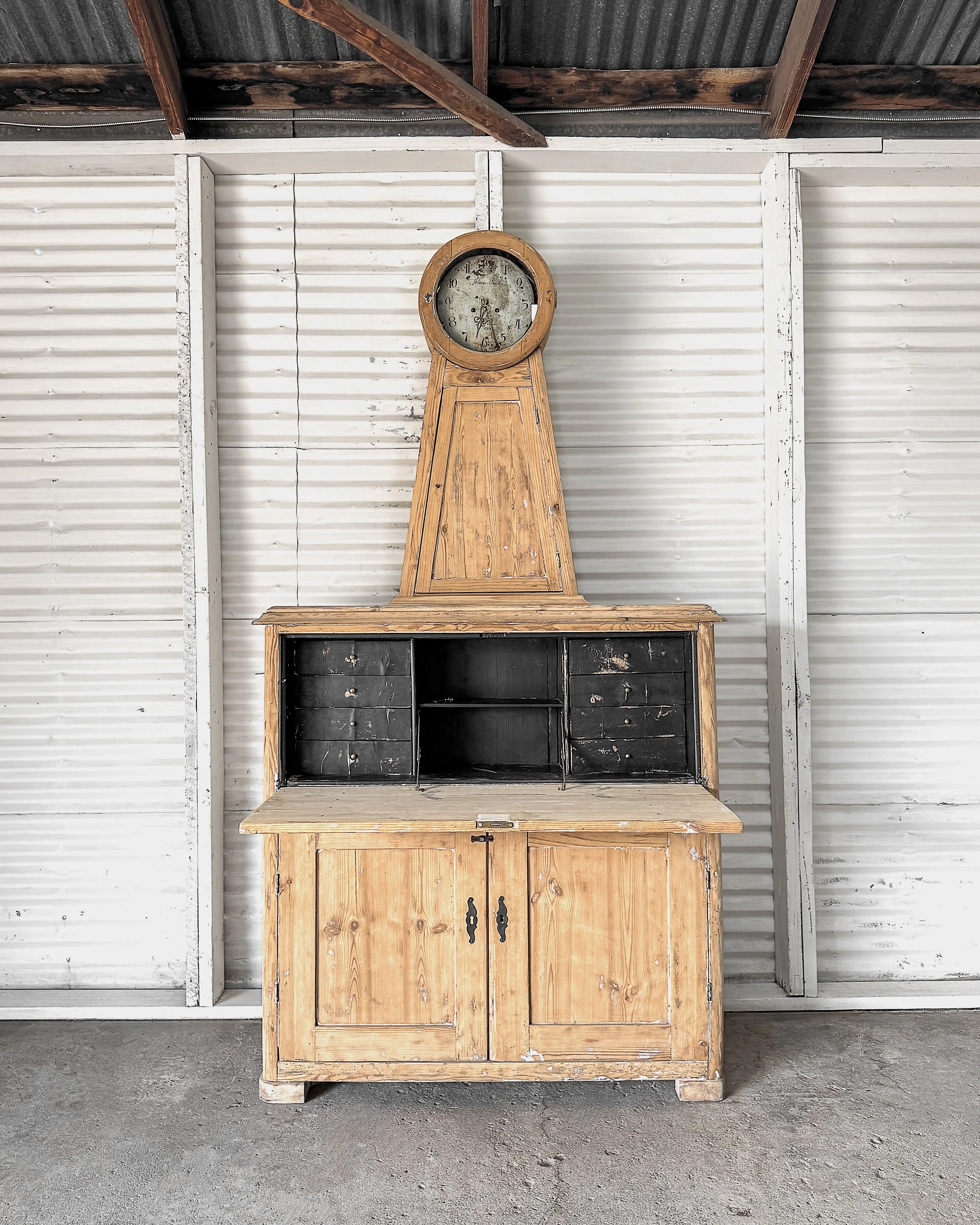 Image 26 of 38
Image 26 of 38

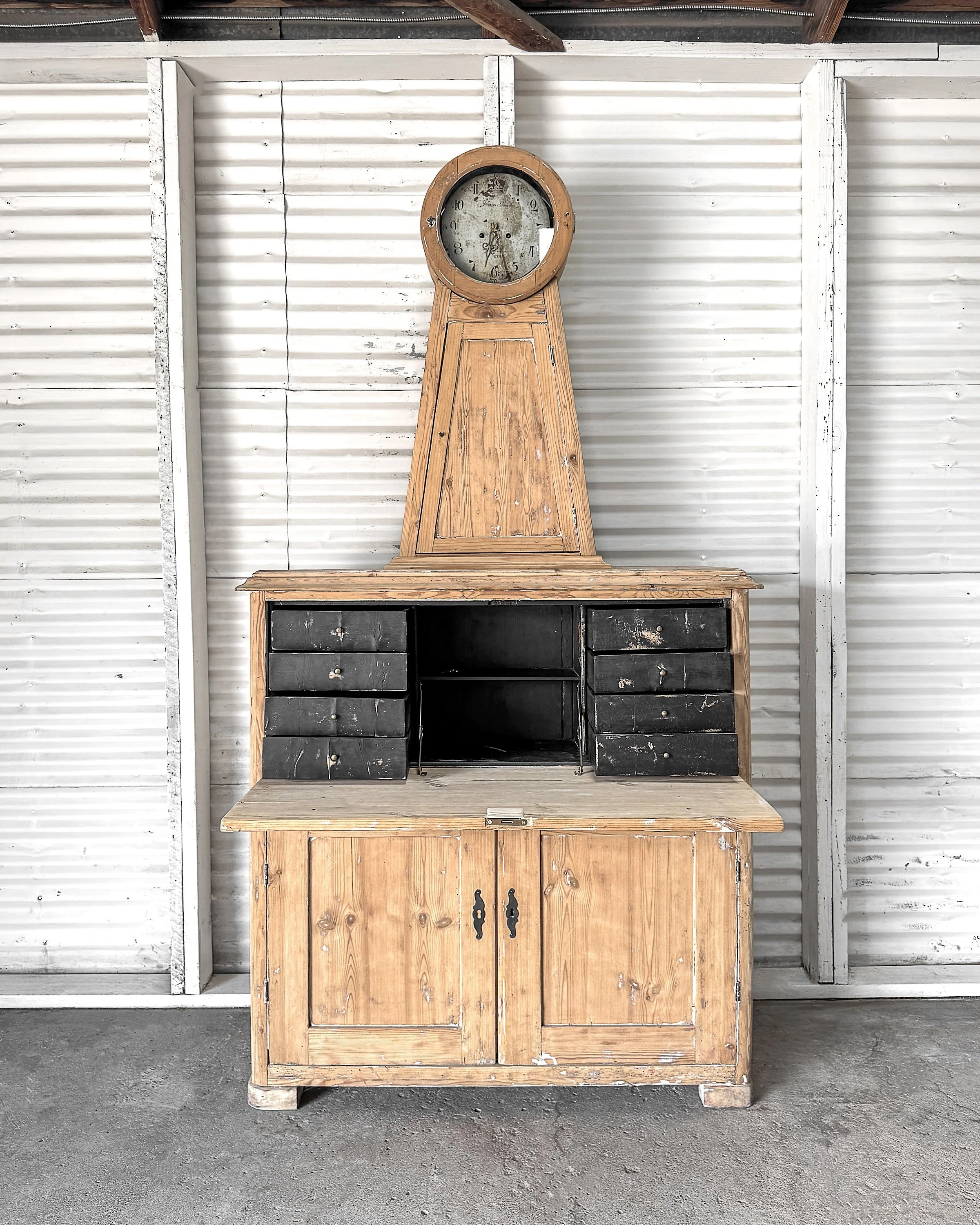 Image 27 of 38
Image 27 of 38

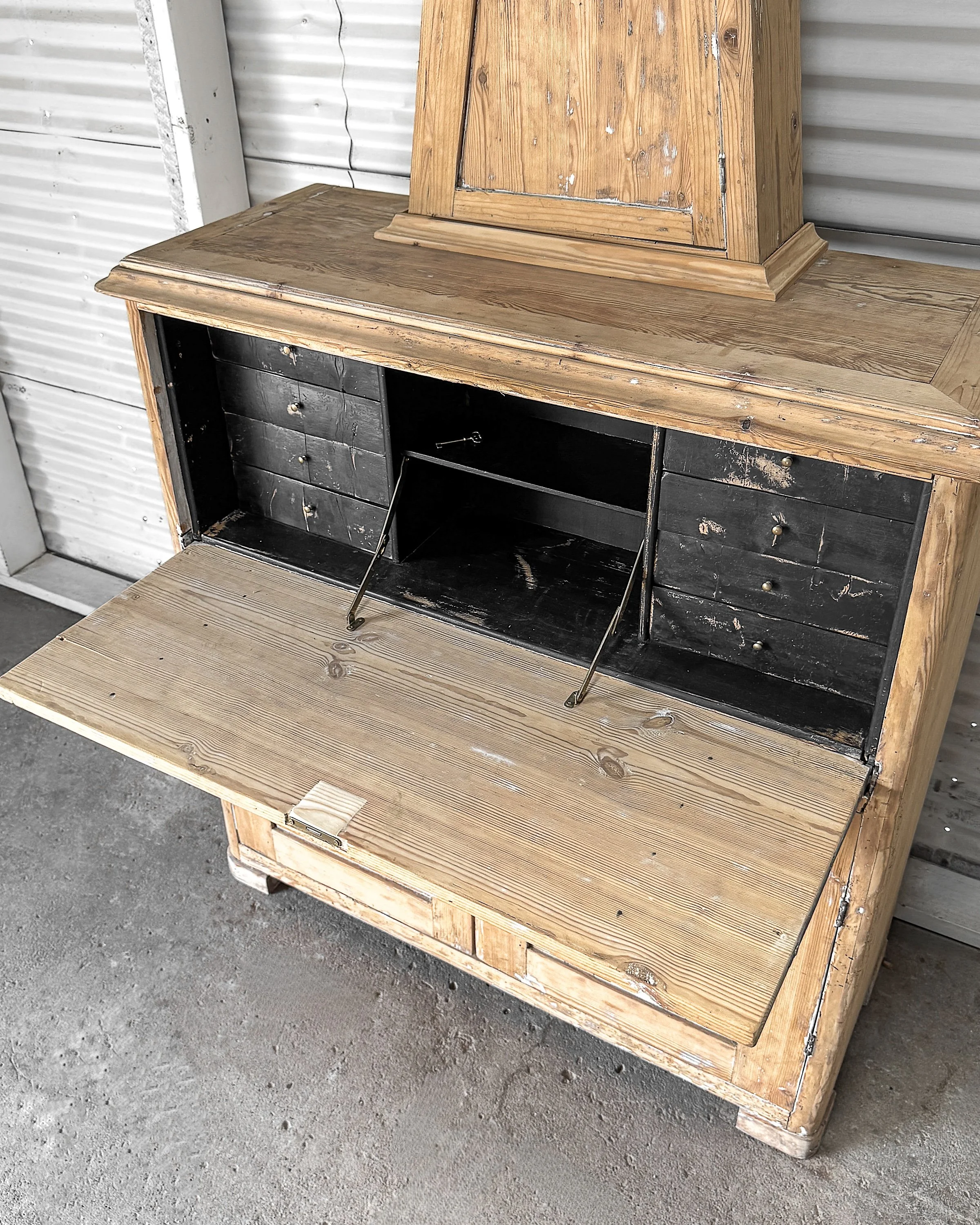 Image 28 of 38
Image 28 of 38

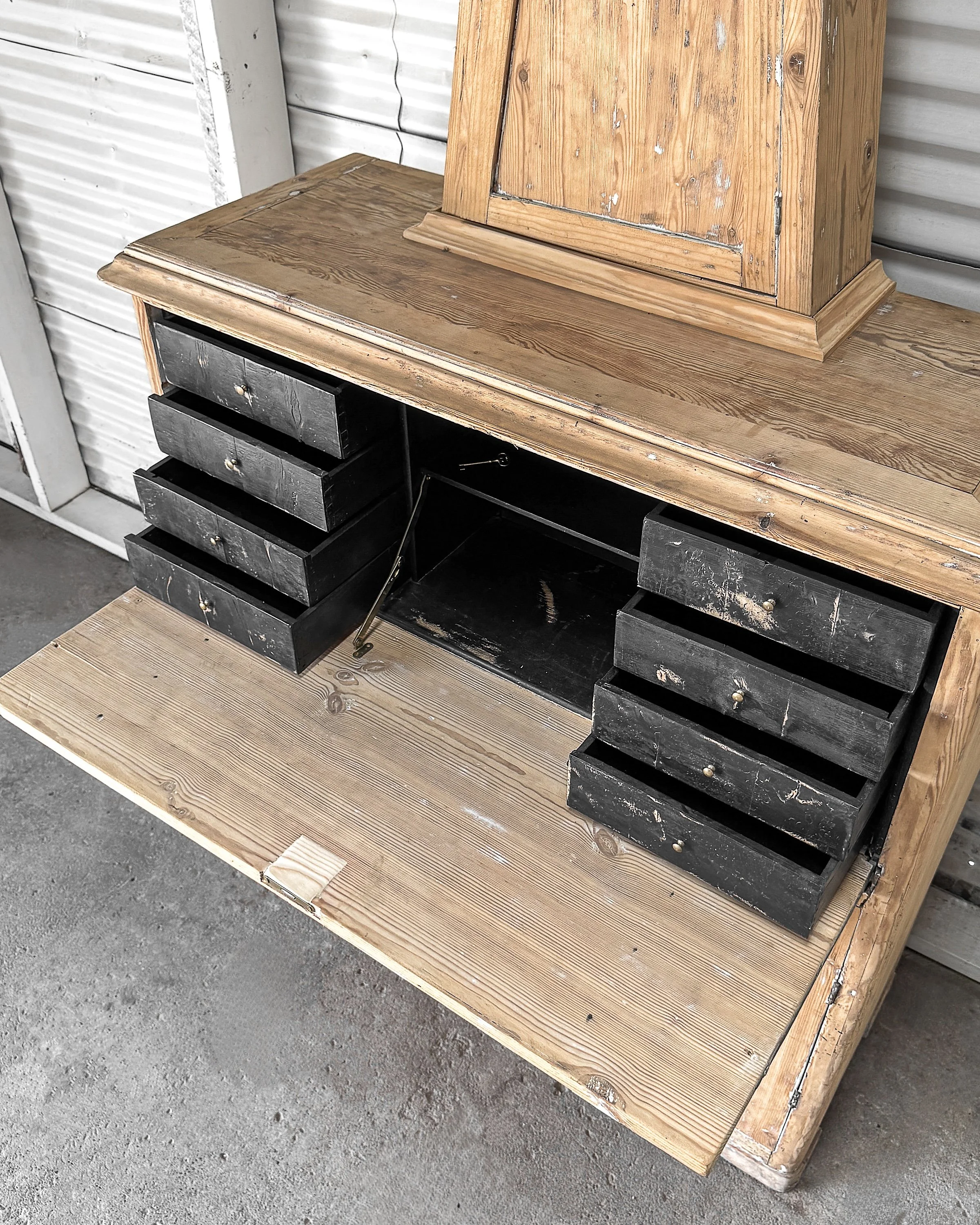 Image 29 of 38
Image 29 of 38

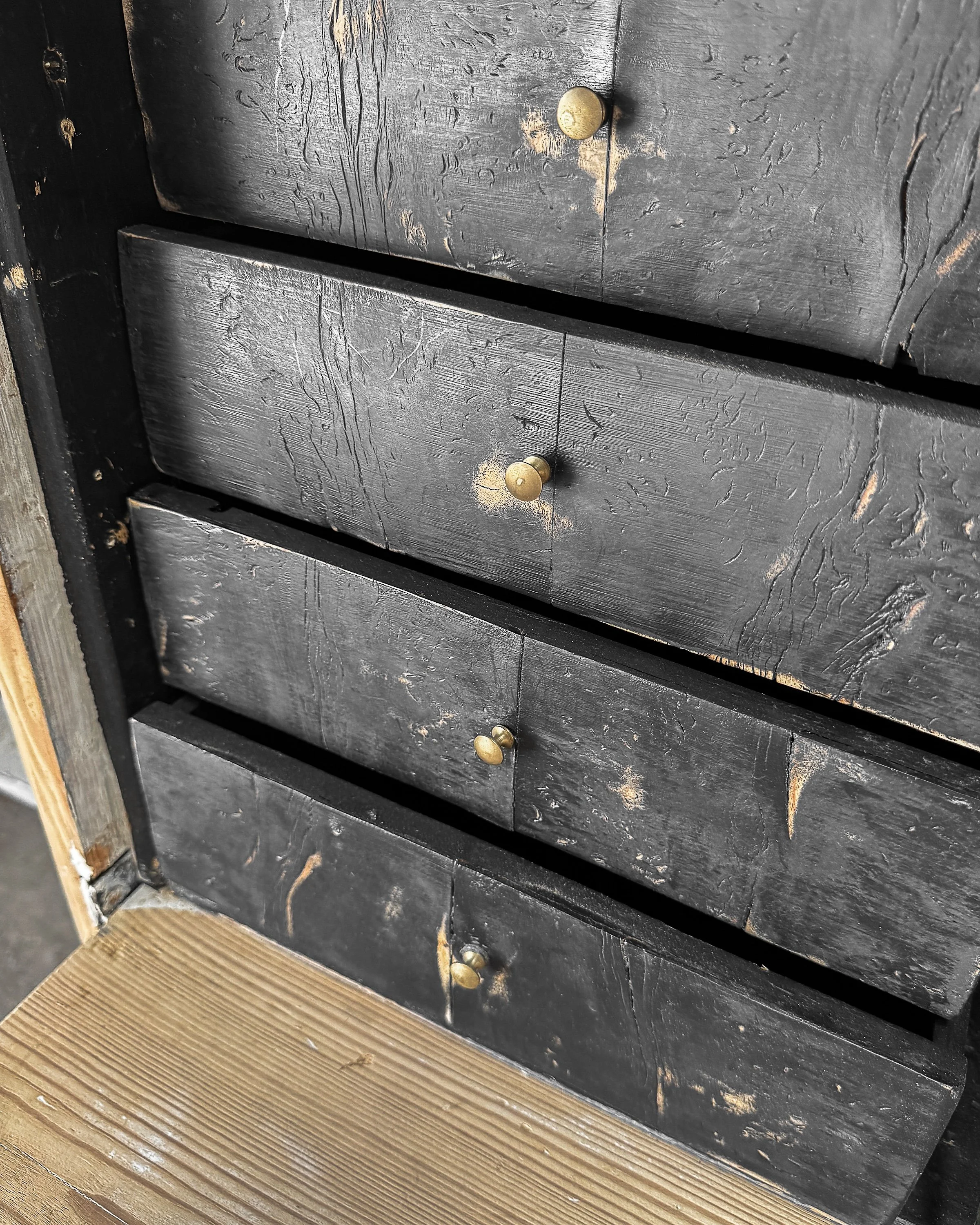 Image 30 of 38
Image 30 of 38

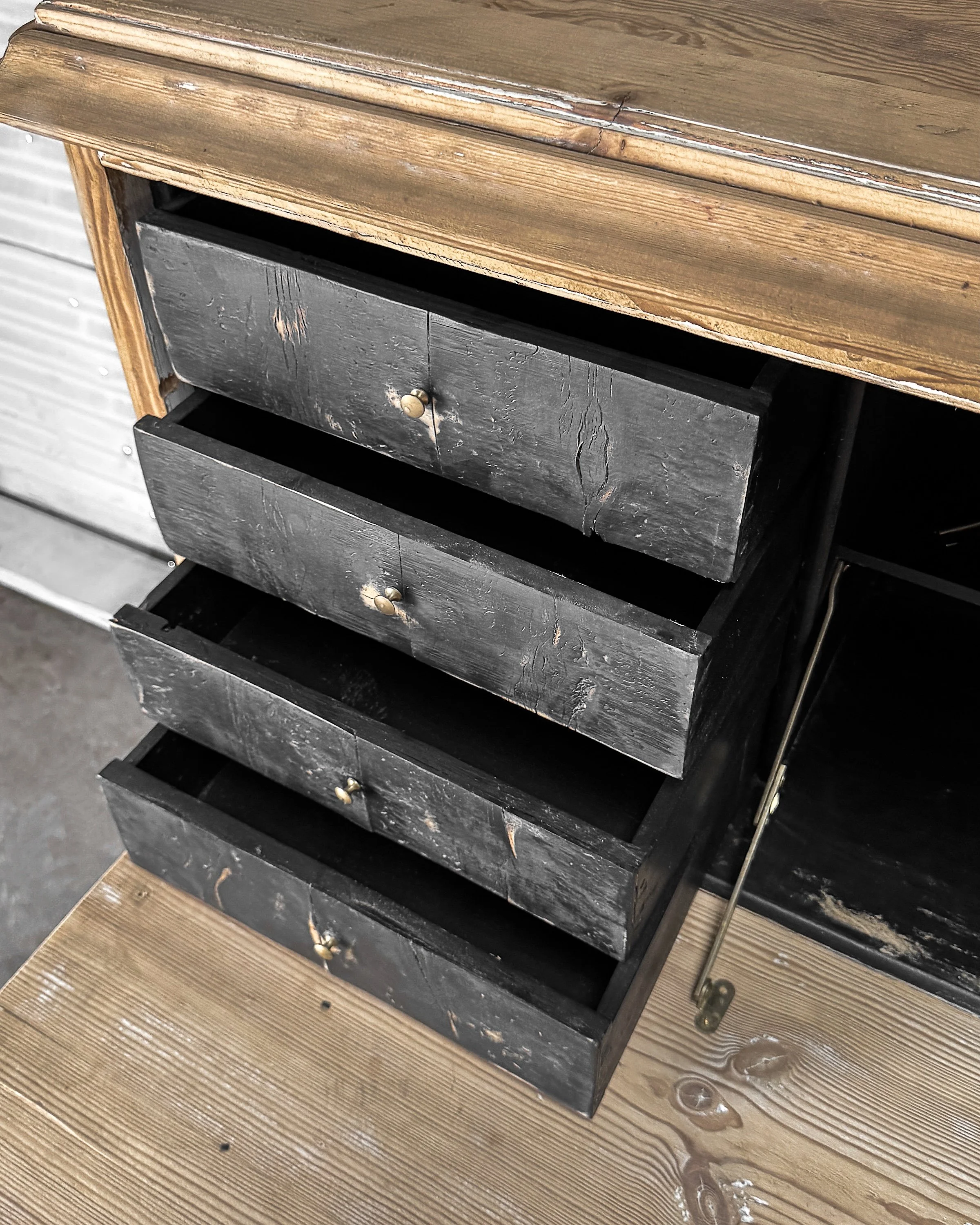 Image 31 of 38
Image 31 of 38

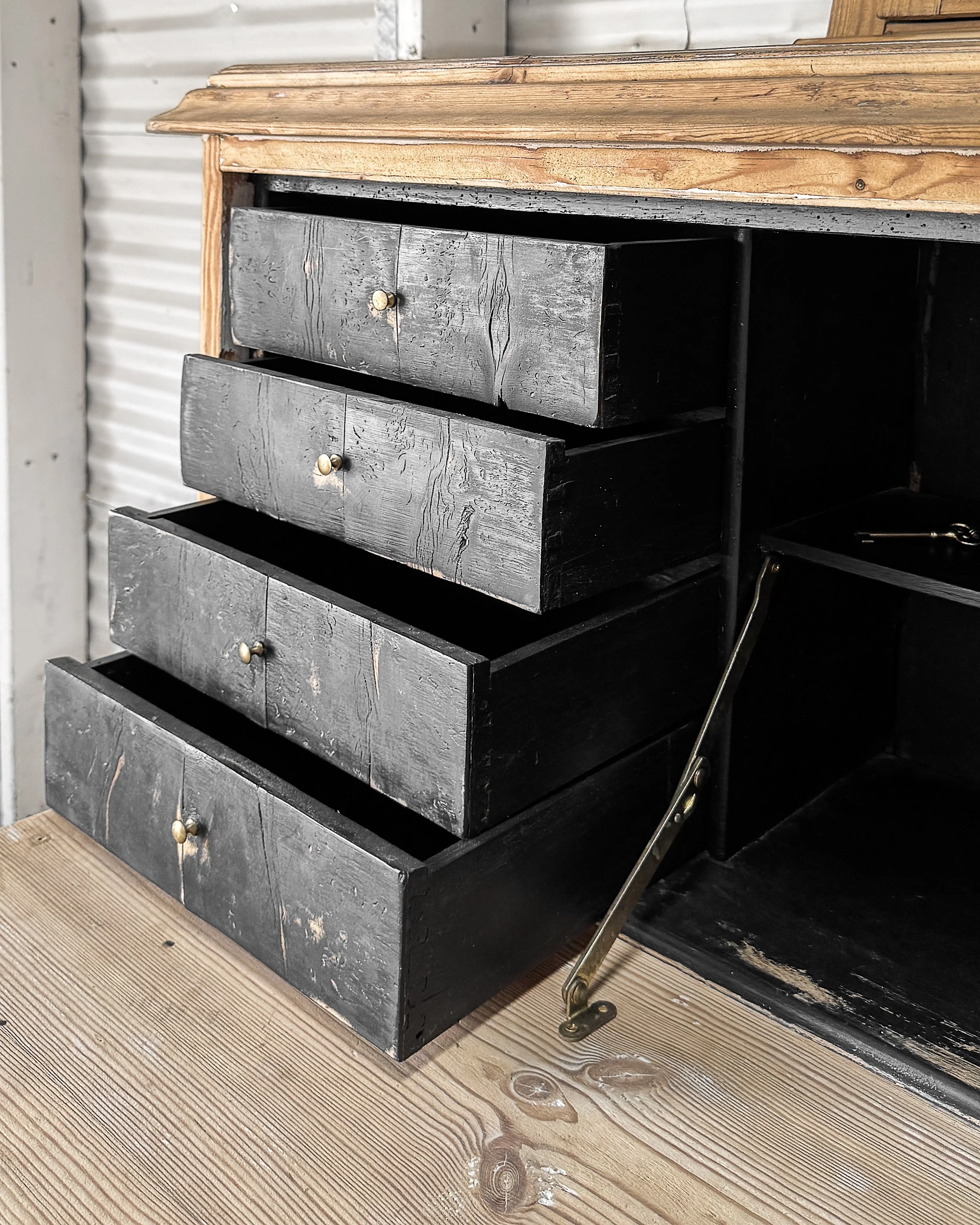 Image 32 of 38
Image 32 of 38

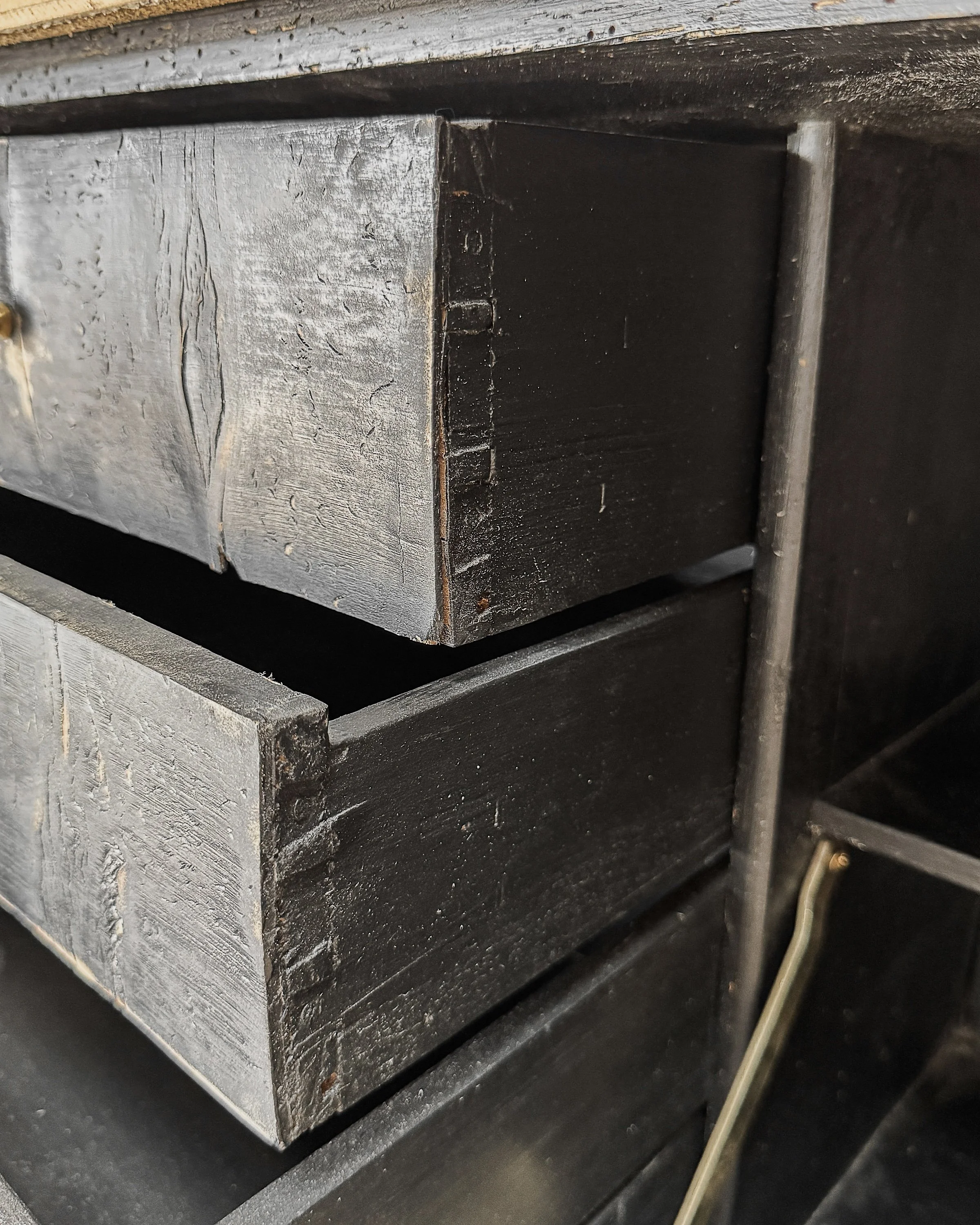 Image 33 of 38
Image 33 of 38

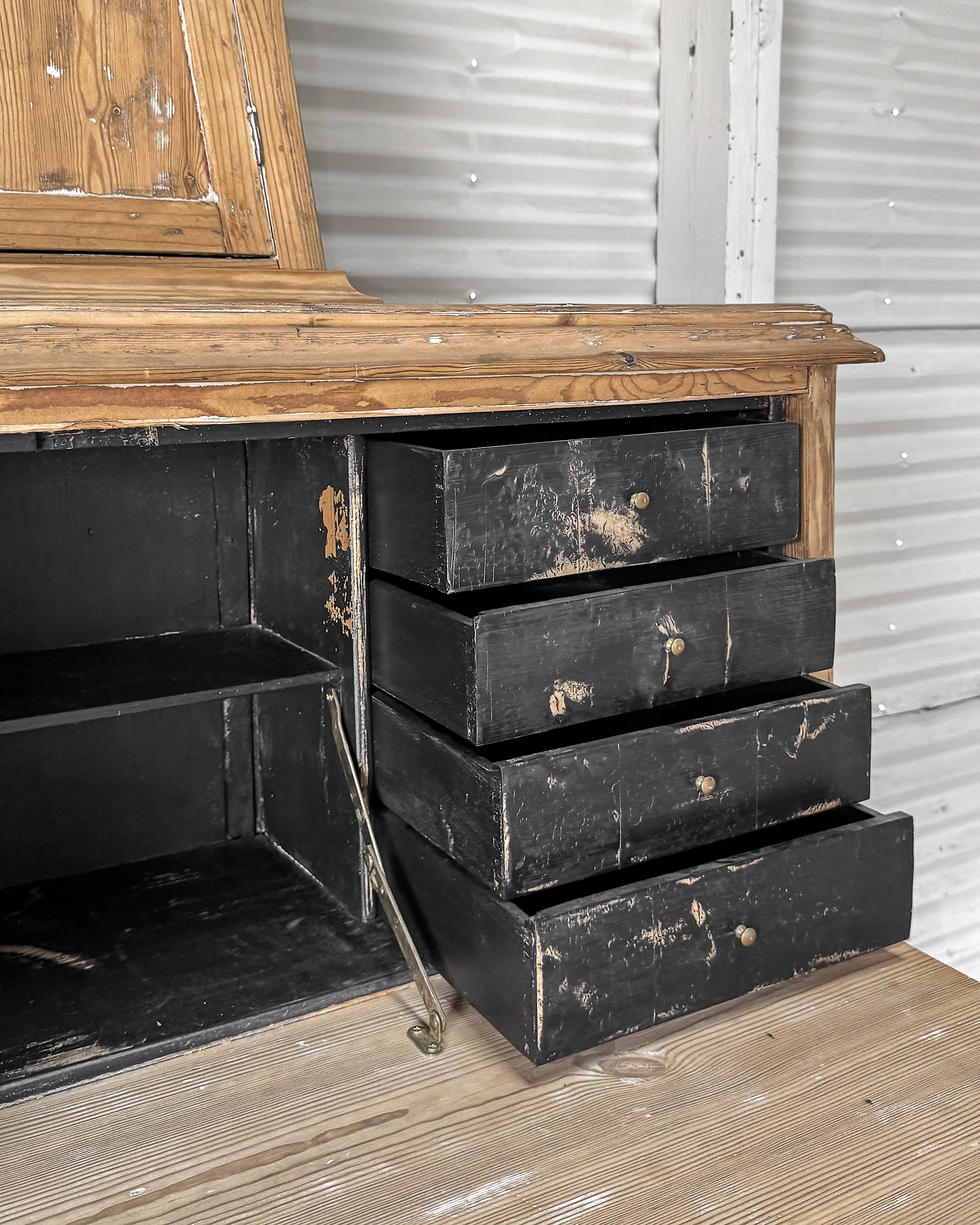 Image 34 of 38
Image 34 of 38

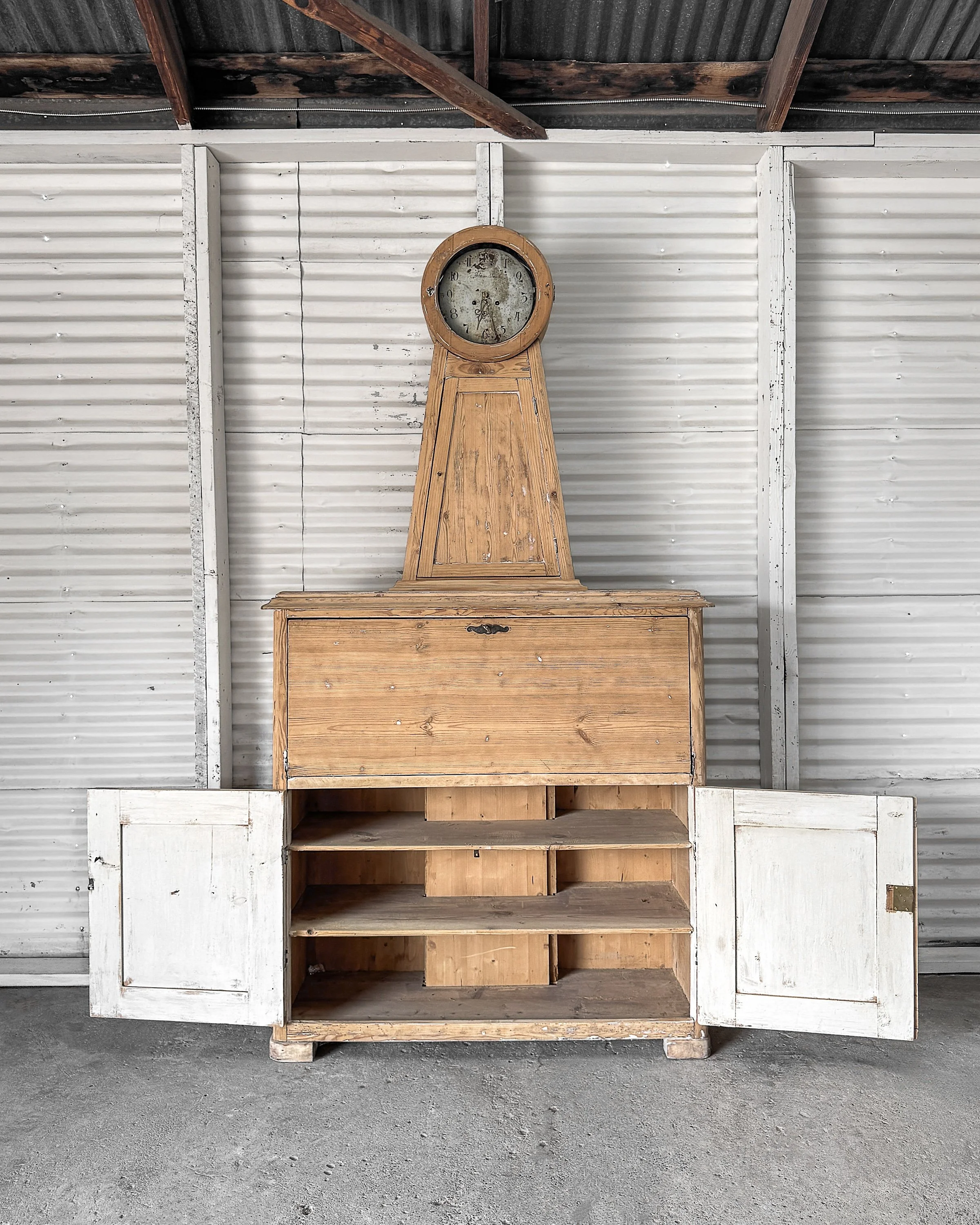 Image 35 of 38
Image 35 of 38

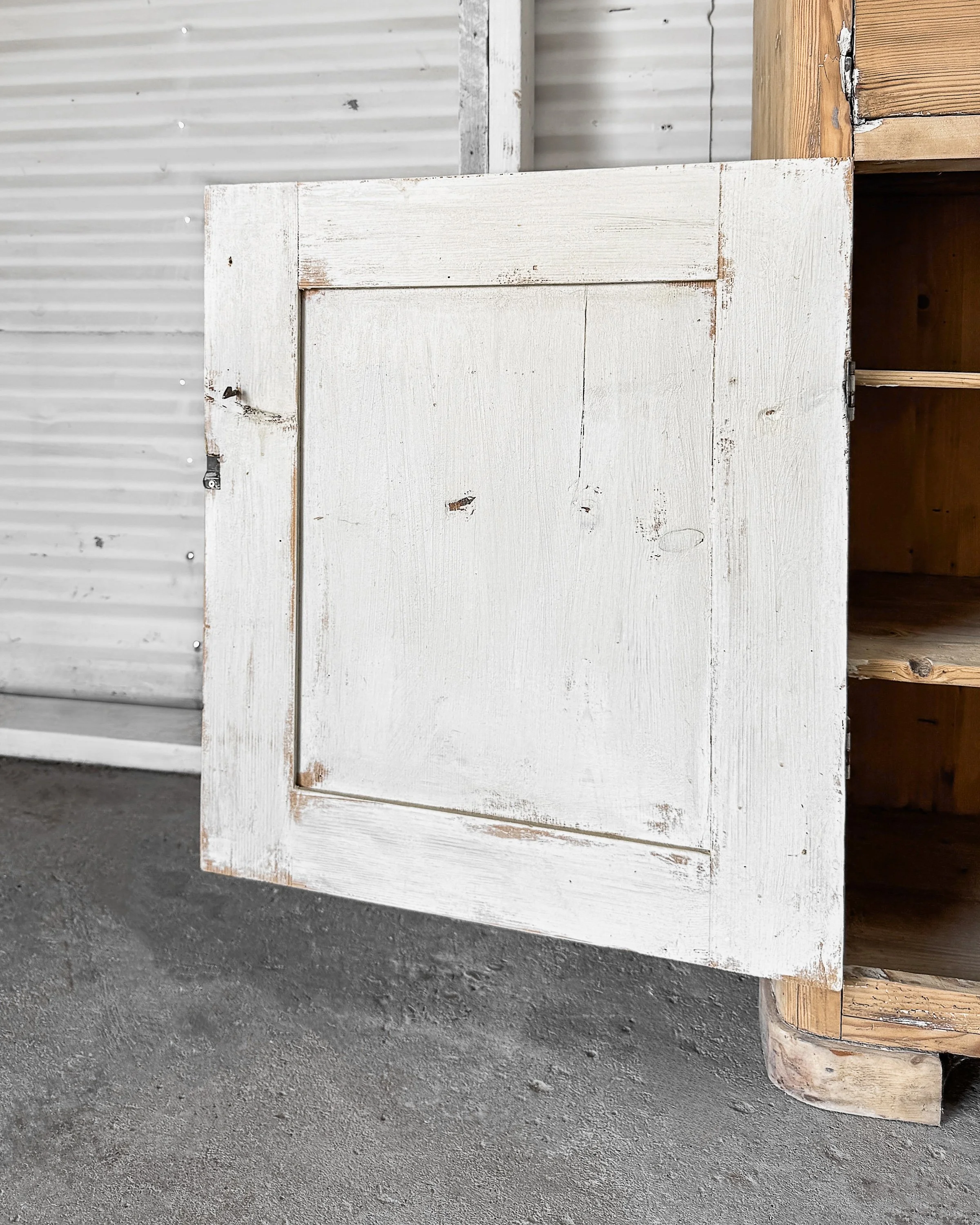 Image 36 of 38
Image 36 of 38

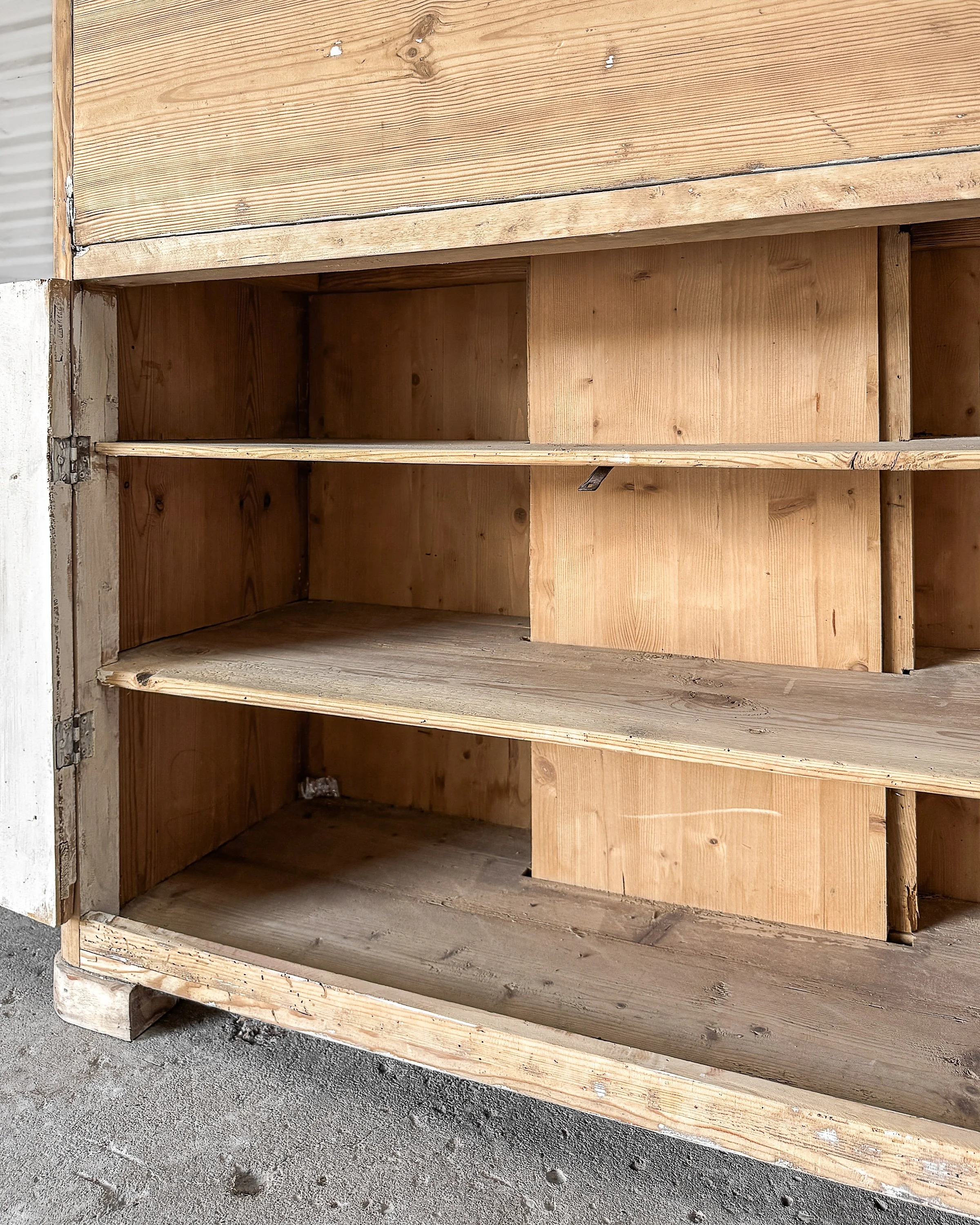 Image 37 of 38
Image 37 of 38

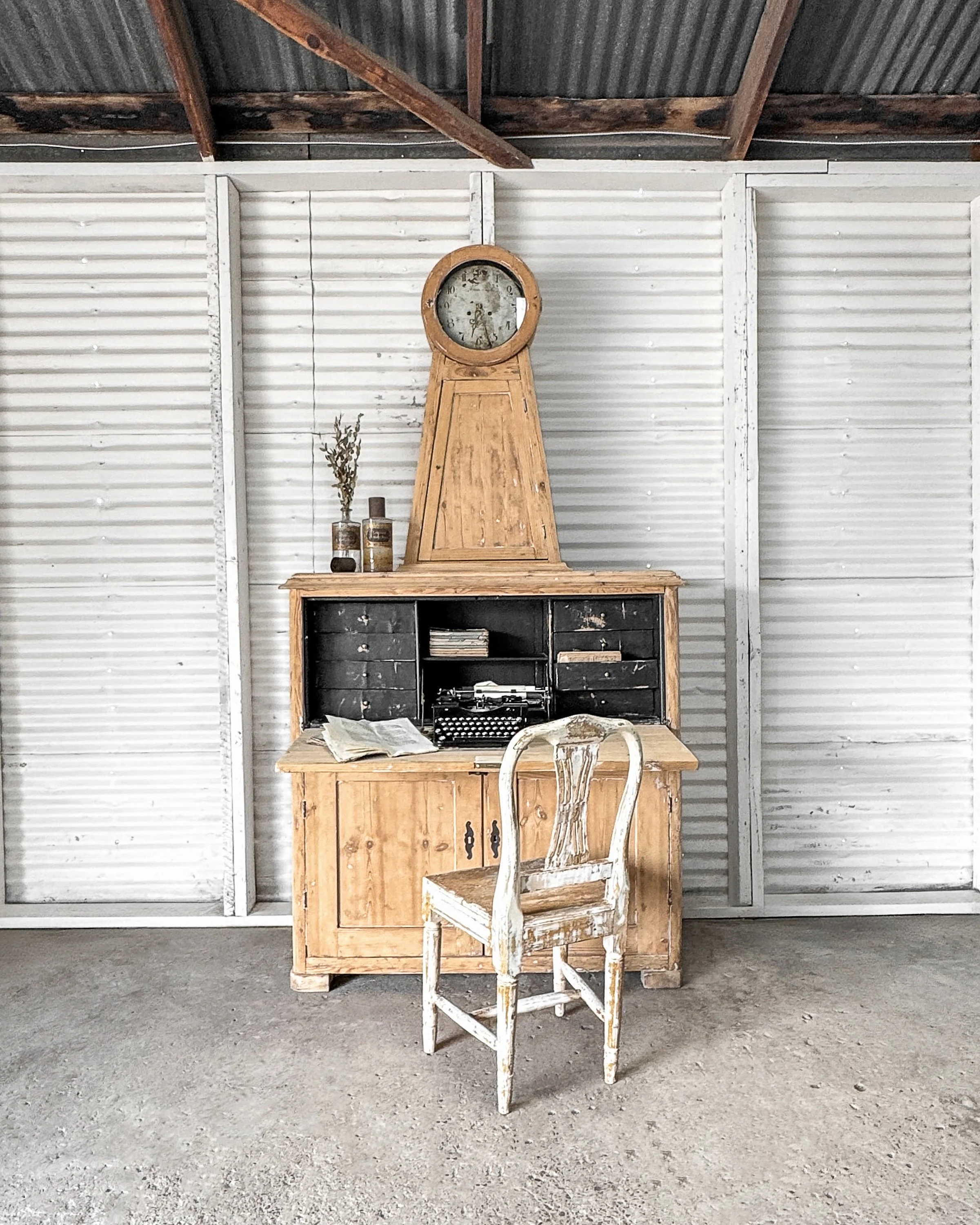 Image 38 of 38
Image 38 of 38







































Gustavian Mora Clock Bureau
A rare example of multifunctional Swedish design, this sekretär med ur (secretary with clock) combines the two most important furnishings in an 18th-century household: the Mora clock and the writing desk. Crafted in pine and reflecting the understated elegance of the Gustavian style, the piece embodies both utility and refinement. Families in rural Sweden often merged these forms to conserve space and create a central “command piece” for the home—timekeeping, correspondence, and storage all in one tall cabinet.
The upper section features a traditional Mora clock, no longer functional, with a plaster-over-iron face and ornate brass hands. The circular dial is set within a tall, tapering paneled compartment, with a small door below that opens to reveal a narrow shelf.
The center section forms the bureau, its drop-front opening to a bank of eight small drawers fitted with brass knobs and two open cubbies. The writing surface rests on newly restored hinges, while locks have been updated for usability. The interior is painted a deep black, a striking contrast to the pale pine exterior now scrubbed back to its natural finish.
Below, two paneled doors open to reveal interior shelving, accented with original ornamental escutcheons. Subtle Gustavian restraint can be seen in the clean lines, honest construction, and quiet proportions—qualities that make the piece as relevant to modern interiors as it was in its own day.
Practical, sculptural, and distinctly Swedish, this Mora clock bureau tells the story of a culture where beauty was expected to serve daily life.
Found in Sweden, circa 1780
The bureau has been taken back to its original natural pine finish, except for the interior of the desk portion (black paint) and interior cupboard doors (alabaster paint), as found
Hints of the original alabaster paint are present in areas, especially around the base of the bureau
Original glass is present on the bonnet
The original inner workings of the clock are intact, but need repair
The wooden pulleys, brass pendulum, and winding tool are present; the weights, however, have been lost along the way
The lock at the center of the writing desk and the brass hinges are recent additions
A small shelf has been fitted within the neck of the clock (not original) (as found)
Wear consistent with age and use
Measures approximately 47.5” W x 19” D x 90” H
Available for pick up, local delivery, and nationwide shipping.
Request a shipping quote here.
Request a trade discount here.
A rare example of multifunctional Swedish design, this sekretär med ur (secretary with clock) combines the two most important furnishings in an 18th-century household: the Mora clock and the writing desk. Crafted in pine and reflecting the understated elegance of the Gustavian style, the piece embodies both utility and refinement. Families in rural Sweden often merged these forms to conserve space and create a central “command piece” for the home—timekeeping, correspondence, and storage all in one tall cabinet.
The upper section features a traditional Mora clock, no longer functional, with a plaster-over-iron face and ornate brass hands. The circular dial is set within a tall, tapering paneled compartment, with a small door below that opens to reveal a narrow shelf.
The center section forms the bureau, its drop-front opening to a bank of eight small drawers fitted with brass knobs and two open cubbies. The writing surface rests on newly restored hinges, while locks have been updated for usability. The interior is painted a deep black, a striking contrast to the pale pine exterior now scrubbed back to its natural finish.
Below, two paneled doors open to reveal interior shelving, accented with original ornamental escutcheons. Subtle Gustavian restraint can be seen in the clean lines, honest construction, and quiet proportions—qualities that make the piece as relevant to modern interiors as it was in its own day.
Practical, sculptural, and distinctly Swedish, this Mora clock bureau tells the story of a culture where beauty was expected to serve daily life.
Found in Sweden, circa 1780
The bureau has been taken back to its original natural pine finish, except for the interior of the desk portion (black paint) and interior cupboard doors (alabaster paint), as found
Hints of the original alabaster paint are present in areas, especially around the base of the bureau
Original glass is present on the bonnet
The original inner workings of the clock are intact, but need repair
The wooden pulleys, brass pendulum, and winding tool are present; the weights, however, have been lost along the way
The lock at the center of the writing desk and the brass hinges are recent additions
A small shelf has been fitted within the neck of the clock (not original) (as found)
Wear consistent with age and use
Measures approximately 47.5” W x 19” D x 90” H
Available for pick up, local delivery, and nationwide shipping.
Request a shipping quote here.
Request a trade discount here.



